
HISPANO SUIZA




Preserve & Enhance

Our mission has evolved since 2007, yet our founding principle has remained constant; to create the most authentic, restored Land Rovers in the world.
Let us breath new life into your own automotive icon. We can completely restore and transform your Land Rover. From the original Series I, Range Rover Classic, right up to the modernera Puma Defender models.
benefits
/ Authentic restorations by over 70 expert technicians
/ Opt to maintain the original engine or upgrade to a 6.2L GM® LS3 for more power
/ Preserve your vehicle’s heritage
/ Infinite customisation options
/ 12-month warranty


It is a real privilege for me to be working with b500 magazine to introduce you to the exclusive world of Hispano Suiza.
Since its foundation in 1904, Hispano Suiza has always been ahead of its time and at the forefront of technology.
Exactly one hundred years ago, Hispano Suiza won the Georges Boillot Cup in Boulogne-sur-Mer with a prototype based on the H6 Coupé.
Today, Hispano Suiza builds fully electric hypercars - the Carmen and Carmen Boulogne - propelled by electric engines deriving directly from Formula E, the maximum expression of sportiness and competes with its own team in the Extreme E Championship.
Our constant search for innovation doesn’t stop here, since Hispano Suiza is the first car company which sells cars as NFTs: unique masterpieces, which many consider as work of arts on wheels.
I do hope you enjoy this journey across the history, the values and the innovations of Hispano Suiza.

Sergio Martínez Campos
CEO
Hispano Suiza


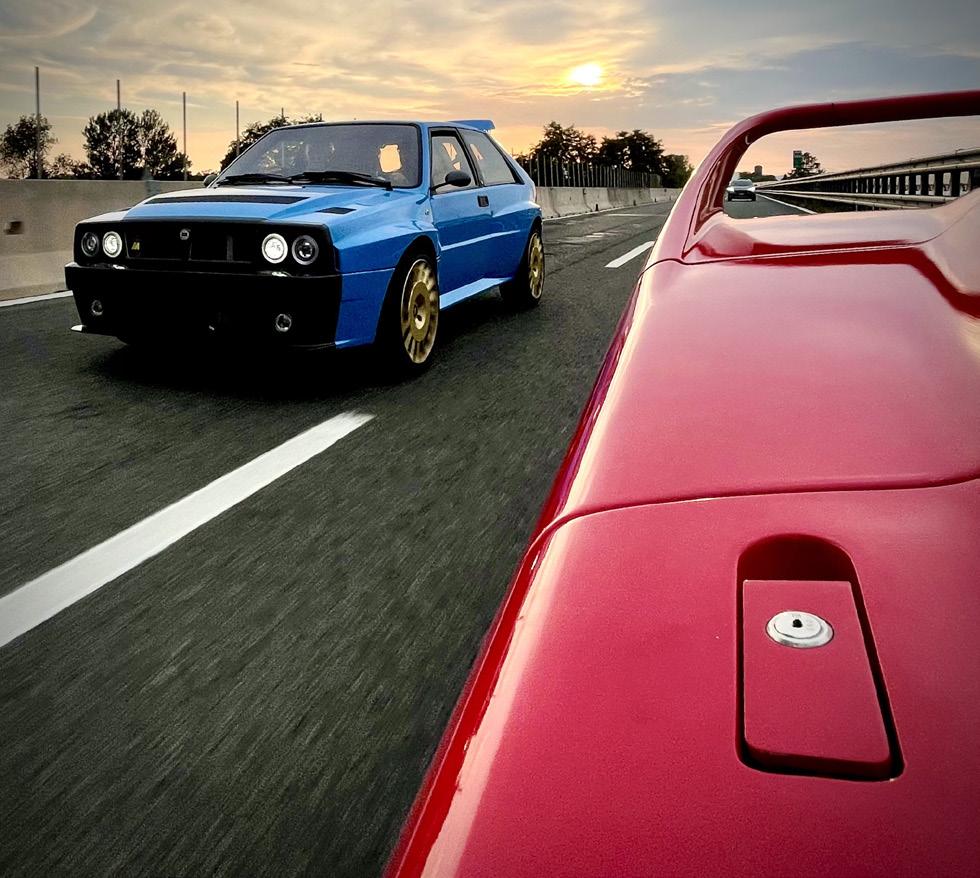

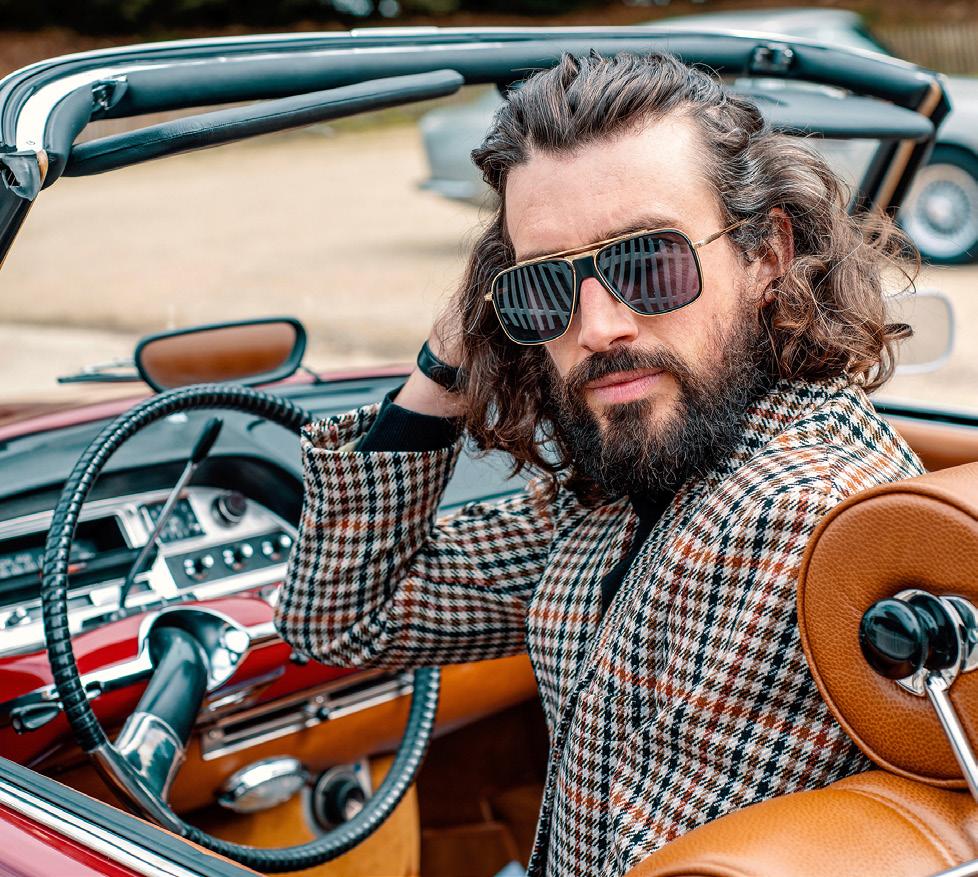
Contact: del@b500.co
The rights of B500 Ltd to be identified as author(s), publisher(s) of this work has been asserted by them in accordance with the copyright, designs & patents act 1988.
All rights are reserved. No part of this publication may be reproduced or transmitted in any form or by any means, electronic or mechanical, including photocopy, recording or any other information storage and retrieval system, without prior permission in writing from the publisher.
The articles as published do not necessarily represent the views of the author or publisher. Information provided is deemed to be accurate at the time of going to press.
The Publisher takes no responsibility for any inaccuracies which may appear within the publication either in original or updated format.
Updated and renewed edition. First published in July 2021.
Copyright: B500 Ltd 2025.













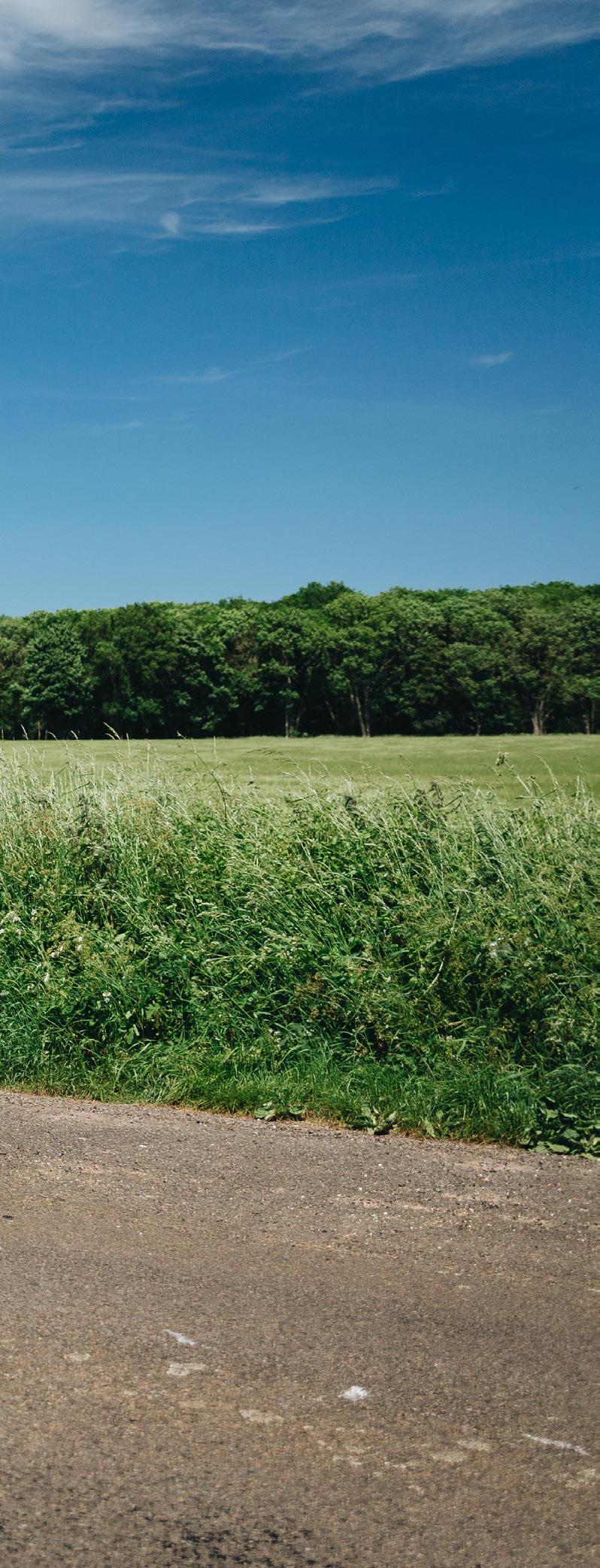



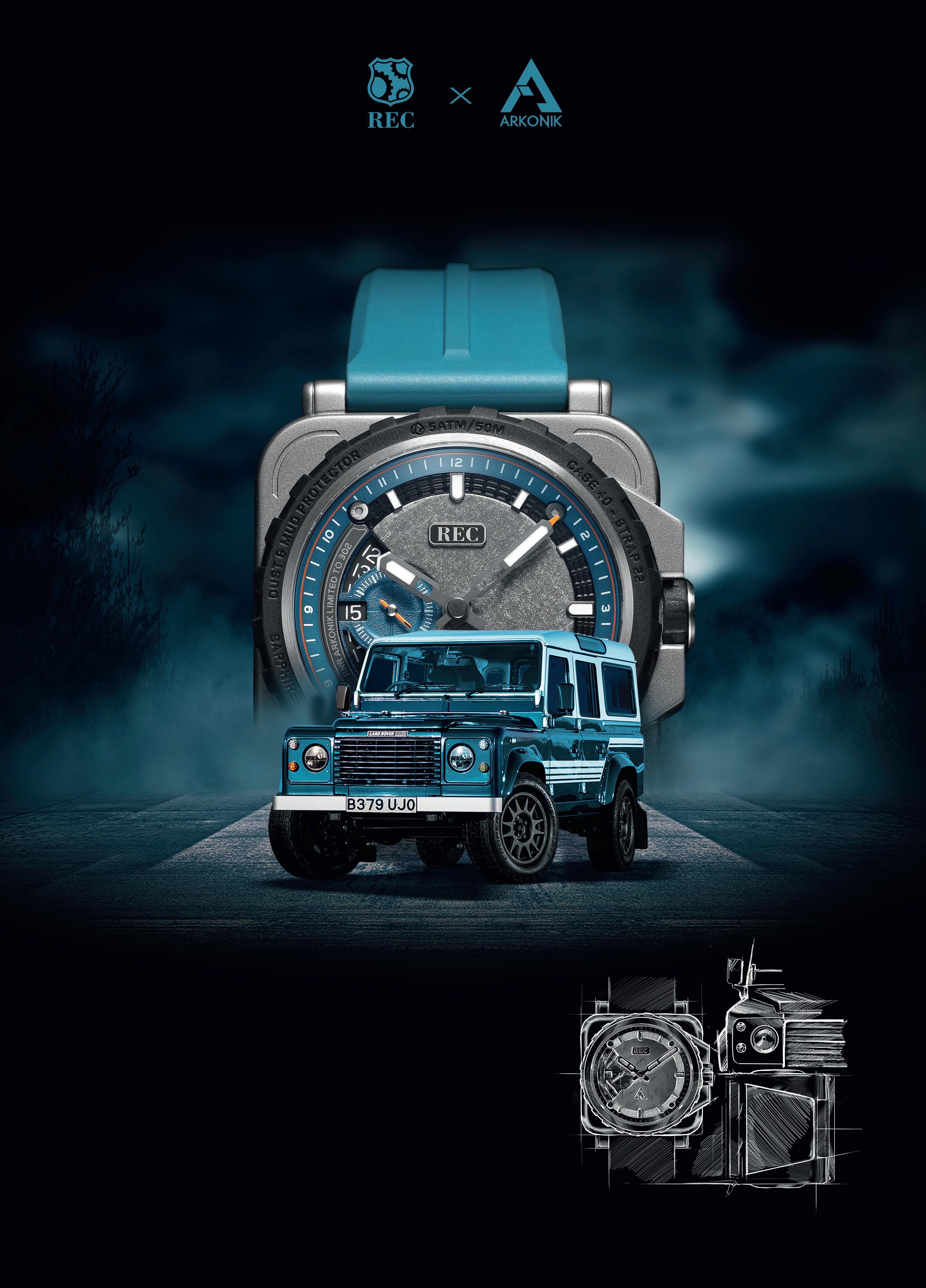


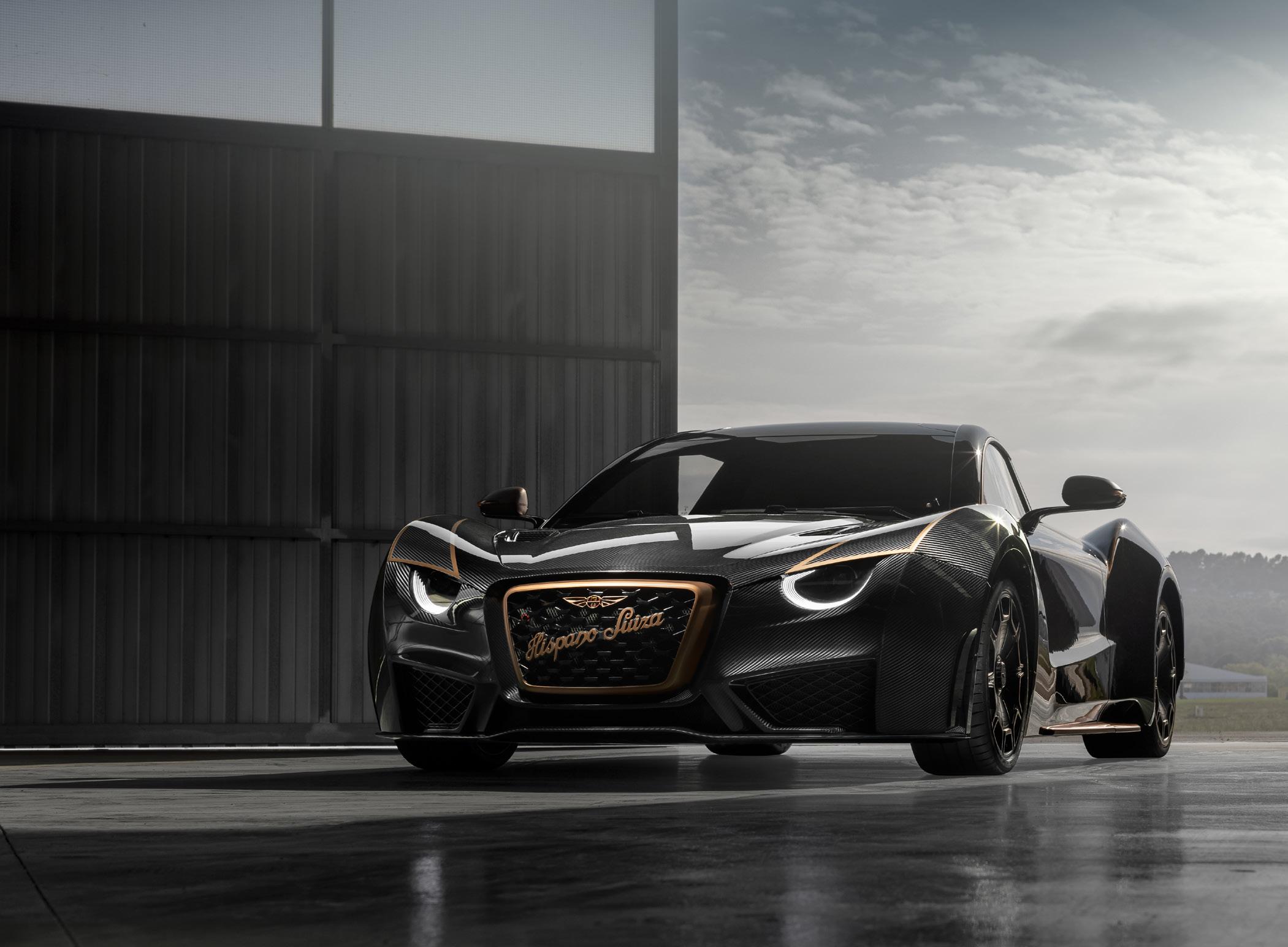
was based in Barcelona. It was really the first Spanish automotive multinational company, since it had factories in Paris, as well as in Barcelona, Ripoll (Gerona), Seville and Guadalajara. In addition to coveted sleek and luxurious ‘touring’ cars, Hispano Suiza made jet engines, buses, trucks and race cars.
Ettore Bugatti had an Hispano Suiza in his private collection and Rolls Royce bought each new model launched by the

Spanish brand to study it thoroughly.
Coco Chanel, Pablo Picasso, Albert Einstein and Luis II of Monaco owned Hispano Suiza cars. In 1929 André Citroën travelled to Barcelona to evaluate the possibility of producing a small and economical model for the Spanish market at the Hispano Suiza factory, although that project never materialised.
Hispano Suiza was born from the drive and talent of three twentieth-century entrepreneurs: businessman Francisco Seix, Swiss engineer Marc Birkigt and lawyer and metallurgical entrepreneur Damian Mateu Bisa. The meeting point was a small car company called Emilio La Cuadra, in which the first two worked and the third was an investor. There, in 1904, they founded Hispano Suiza and two years later unveiled the 40HP at the Paris Motorshow.
It was then, when one of the ‘influencers’ of the time, the King of Spain, Alfonso XIII, a car enthusiast and a real petrolhead, ordered a car and ended up acquiring an 8% of the company’s capital.
In the roaring 1920s, Hispano Suiza built 1,000 cars a year and employed more than 2,000 people. They won races in Monza, in Boulogne (France), in the Paris-Cannes women’s race and even in Indianapolis. In 1926 they set up a subsidiary under license in Argentina, similar to those already operating on behalf of the brand in Italy or Great Britain.
The convulsed history of the 20th century hit Hispano Suiza really hard, and after the Spanish Civil War, in 1946, they decided to close down the car business after having manufactured more than 12,000 automobiles.
Their factories were sold to the Spanish National Institute of Industry (INI) and served as the basis for creating a public company, ENASA, which manufactured Pegaso trucks, that was later acquired by IVECO. However, the Mateu family maintained ownership of the brand and in 2019 brought it back to life with a project as innovative as the one that helped them succeed a century earlier.
At the Geneva Motor Show that year, the first Hispano Suiza of the 21st century was unveiled, the Carmen, a 100% electric hypercar, delivering 1,019 HP and 1,160 Nm of torque that allow it to accelerate from 0 to 100 km / h in less than 2.6 seconds. Top speed is limited to 250 km / h. Built on a carbon fiber monocoque, it weighs 1,690 kg and is 4.73 m long, 2 m wide and 1.24 m high, with a wheelbase of 2.80 m. The braking system is electronic by wire and is combined with ceramic brakes with sixpiston calipers. The suspension is multilink front and rear and integrates ABS, traction control and electronic stability control (ESP).
The body design is inspired by the Art Deco movement and by the Hispano Suiza Xenia Dubonnet, a gorgeous car from the 1930s, commissioned by André Dubonnet, a French aviation hero, racing driver, athlete and inventor.
The name Carmen originates from Carmen Mateu Quintana (1936-2018), granddaughter of the Hispano Suiza
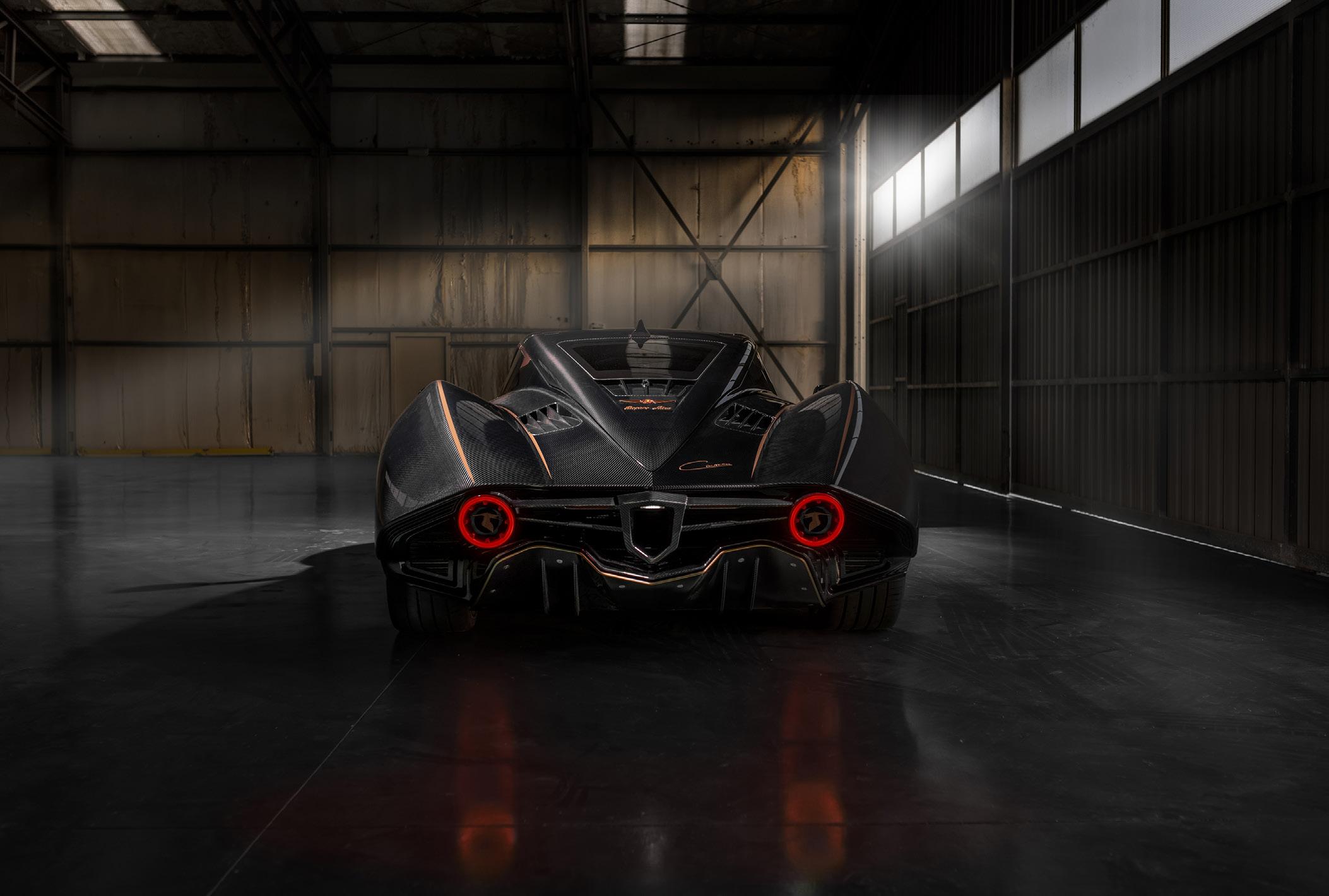
founder Damian Mateu. Exclusivity, sophistication, high technology and innovation define Hispano Suiza cars in the 21st century as well. Only 19 Hispano Suiza Carmen will be produced, each one completely tailor made to its owner’s tastes. A Hispano Suiza Carmen, allows more than 9,500 different configurations of mirrors, exhausts, wheels, steering wheel, upholstery, floor mats... It takes between nine months and a year to manufacture a single unit.
The events of the 21st century have also affected the new era of Hispano Suiza. The pandemic prevented the physical launch of the second model of the brand, the Carmen Boulogne, at the 2020 Geneva Motor Show: a sportier, lighter, powerful, more expensive and even more exclusive evolution of its sister model Carmen. The Boulogne was undoubtedly due to become one of the stars of the Swiss show, which was cancelled just a few days before opening its doors to the public.
The Boulogne features an improved chassis and powertrain technology. It
raises its power to 1,114 HP and speed has been limited to 290 km/ h. The maximum torque is 1,600 Nm, available right from the start.
This two-seater with two doors that open upwards weighs 1,630 kilos, 60 less than the Carmen. To achieve the
lightness, carbon fibre has been used in the chassis, for the steering wheel and in the bodywork which, just as in a tailored suit, perfectly adjusts the metal lines on a dark background of this material. Only five units are going to be manufactured and one of them already has an interested buyer in Mexico.
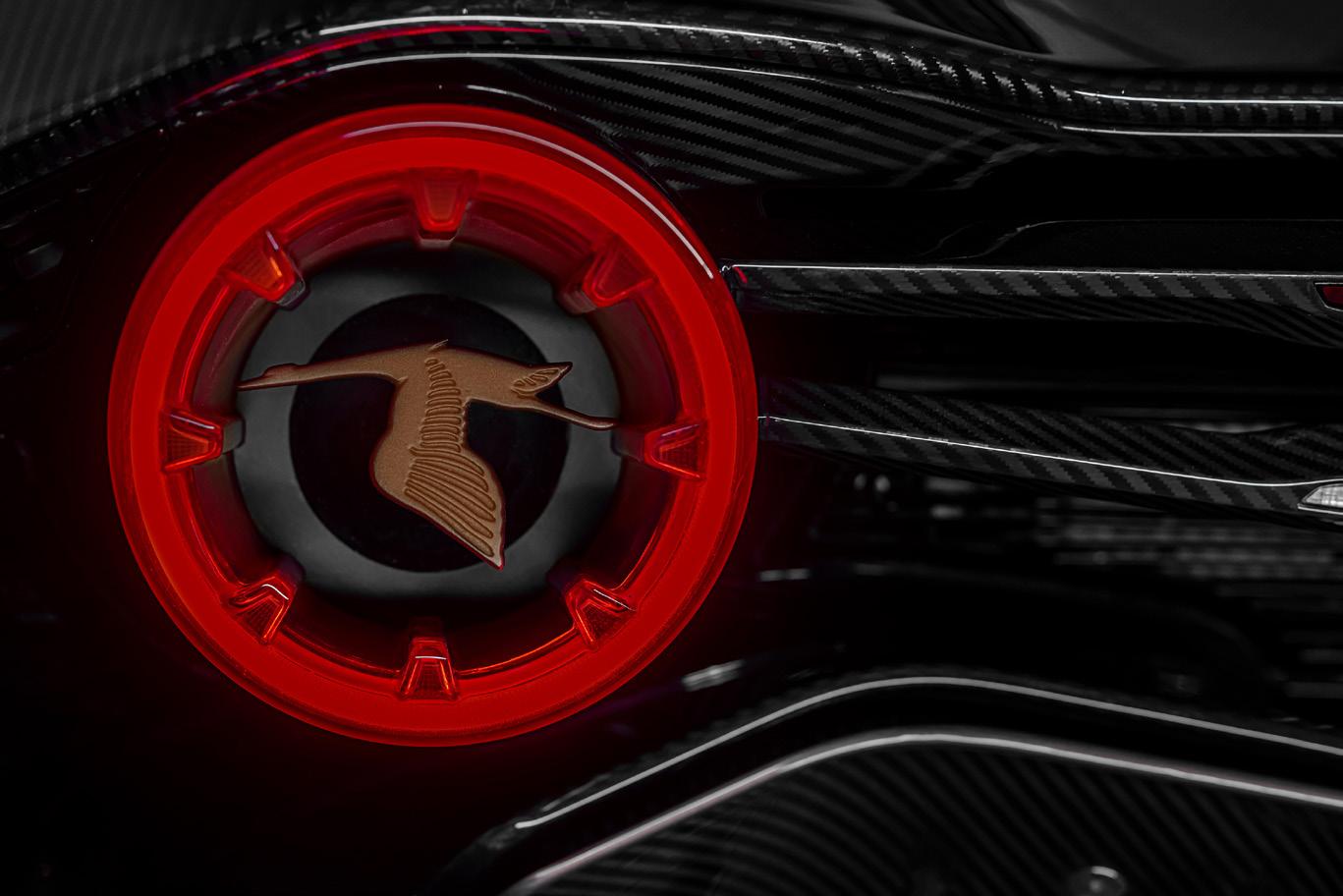
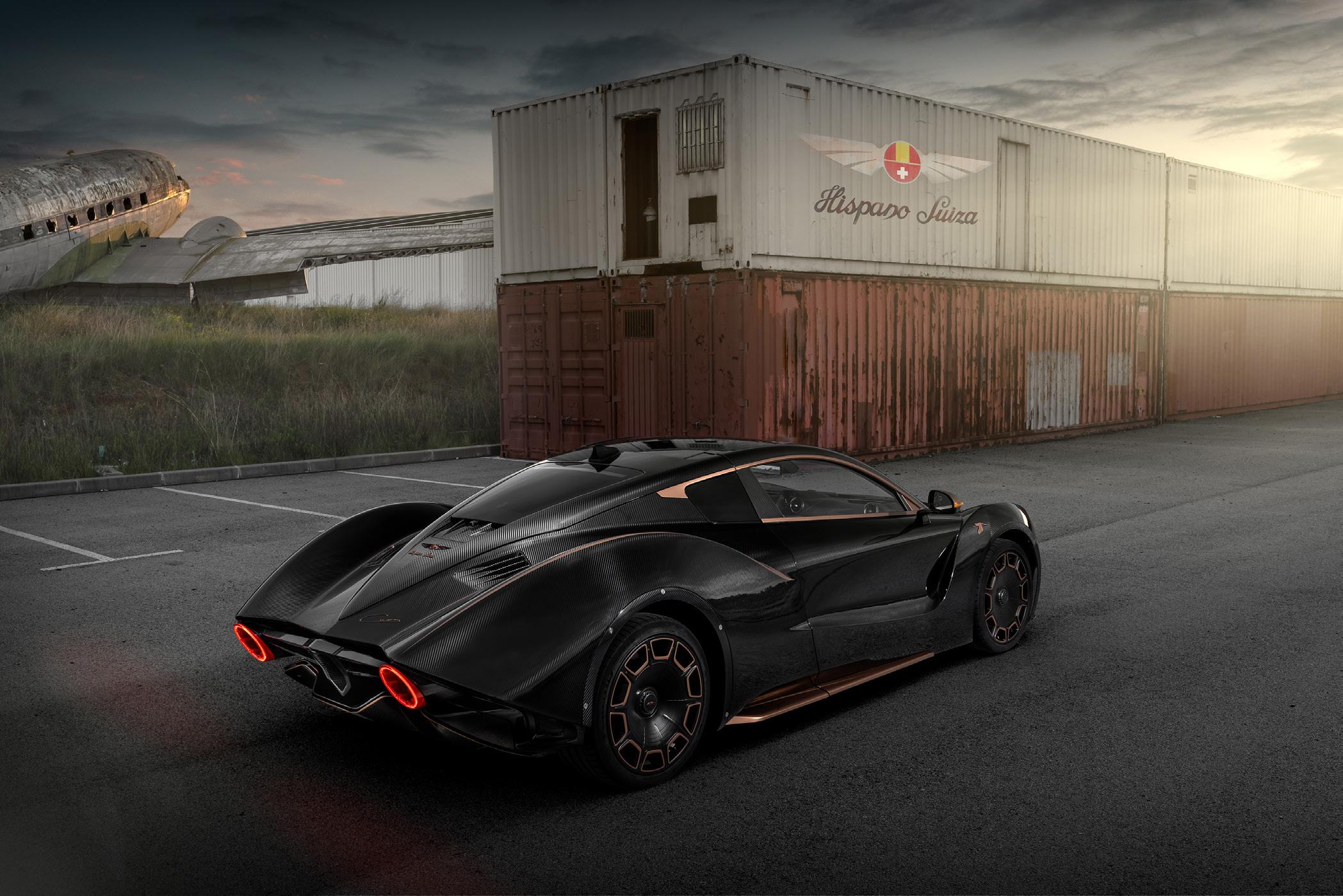
Both models use 700 T-cell lithium-ion polymer batteries, which act as an interior skeleton, from the centre column to the rear. They have a capacity of 80 kWh and their autonomy could reach 400 km. The fast charging capacity is greater than 80 kW, which would allow charging from 30% to 80% in just 30 minutes. The cooling of the batteries is achieved through three front radiators.
The base price of the Carmen Boulogne, which takes its name from the 1921 win in the Georges Boillot Cup, held at the Boulogne-sur-Mer circuit, is 1.65 million Euros, while the Carmen is priced at 1.5 million Euros. Those figures are just the base of what a unit can cost if customisation elements are included.
Hispano Suiza is part of the Peralada Group, a family owned business led by brothers Isabel, Javier and Miguel Suqué Mateu, great-grandchildren of founder Damian Mateu. In addition to Hispano Suiza, the Peralada Group owns wineries, hotels, casinos, distribution companies and the Peralada Castle, home to the
Peralada Music Festival, an international event celebrating music and ballet.
The castle was acquired in 1923 by the patriarch of the family. It dates back to the 14th century but has had multiple extensions and reforms since then. The castle serves as headquarters of the business group, houses an important art collection and library and later this year, it will host the first Hispano Suiza Museum Exhibition, according to Sergio Martínez Campos, Hispano Suiza’s CEO: “We want customers and fans of the brand to have a complete Hispano Suiza experience, and in this museum we can show all the legacy that the Mateu family has preserved for more than 100 years,” he explained.
Hispano Suiza production takes place in a boutique factory in Montmeló, next to the F1 and MotoGP circuits and about 100 km from Peralada. Engineers and mechanics from Formula E, work in its production. Motorsport is also a fundamental component of the ‘new‘ HIspano Suiza, just as it was in that of its ancestors a century ago. But the races are different
now. Hispano Suiza has a team in the innovative Extreme E Championship. “It is a unique and pioneering competition that is helping us in different areas, not just to gain visibility and brand awareness”, explains Martinez Campos. “In the first race in the Al-Ula desert (Saudi Arabia) last April, our engineers found a cooling solution that could be carried over to the Carmen, for example”.
Hispano Suiza clients can follow the entire manufacturing process of their vehicles virtually or travel to the factory to see it in person. With the limitations of international travel this has not been possible over the past year, but Martínez Campos is confident that it will soon start again.
As well as the direct presence of the brand in the most exclusive car events such as Amelia Island or Le Mans, Hispano Suiza hopes to take part in The Bridge, an exclusive car event, which takes place in the Hamptons (USA) in the autumn. Together with the UK and Mexico, these are the key markets for Hispano Suiza.


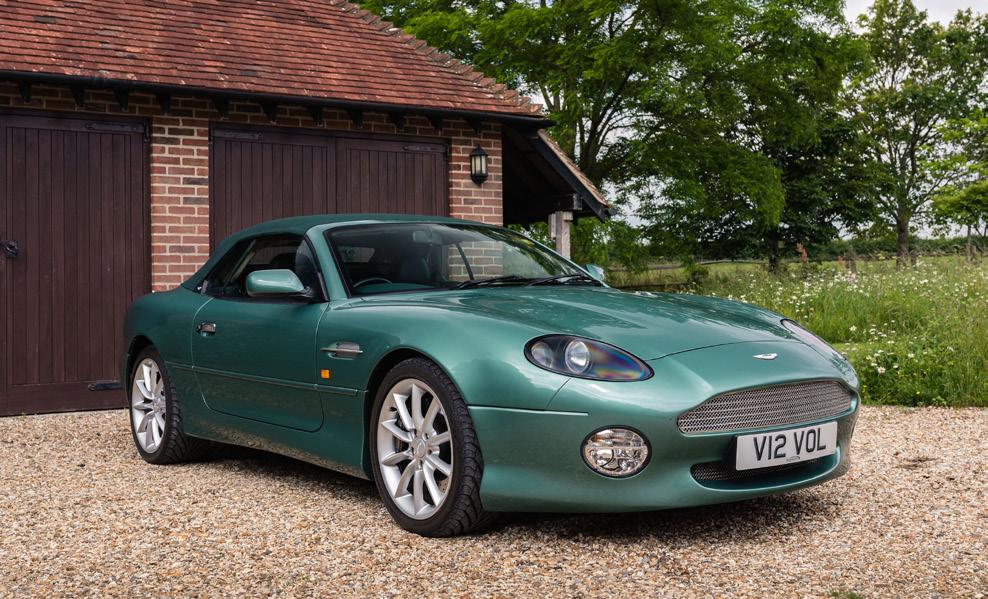
1 owner from new, 20,000 miles, impeccable condition, full service history.
£43,500

UK supplied, special order Cassis Red metallic, flawless condition, low mileage.
£62,500
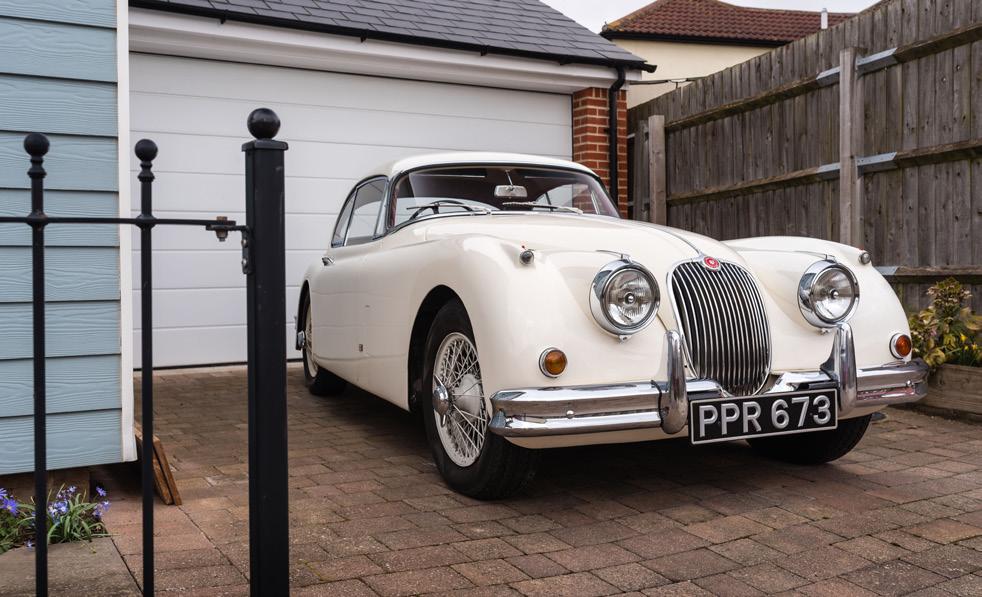
1957 Jaguar XK150 SE
Matching numbers accompanied with its Jaguar Heritage Certificate, restored in the 90s by a marque specialist, current ownership since 1984 and fitted with rare factory XK140 details.
£64,500

A UK supplied RHD example, 4,766 miles from new, full Ferrari service history, presented in like new condition, a perfect example for any Ferrari collection.
£237,500

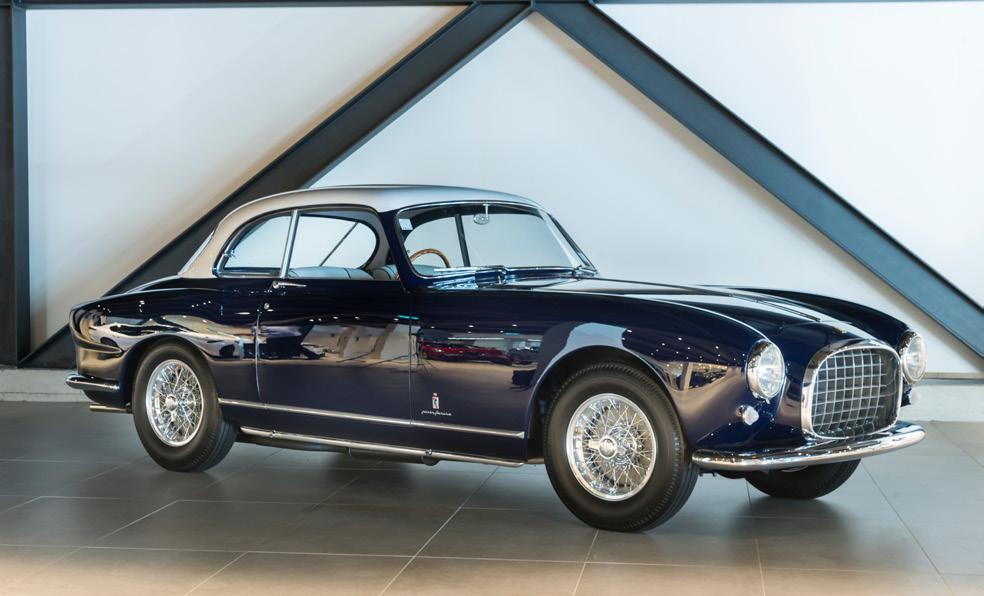
1952
Prototipo, delivered new to Enzo Ferrari, fresh from a concours restoration, matching numbers throughout, rare and desirable show car, welcome at major concours.
£845,000

1953 Porsche 356A Coupe
Restored by marque expert, presented in original colour Fjord Green, on the button ready, 1,226 KM since nut and bolt restoration.
£99,500



1964 Porsche 356C
1995 Porsche 993 Carrera RS
Restored in 2010 by Maxted Page & Vintage Cars Boutique, matching numbers and original colour combination, offered with Porsche Certificate of Authenticity and supplied new to California, USA.
C16 UK specification, full service history with 17 stamps, original owners leather pack, an exceptionally well documented and cared for example.
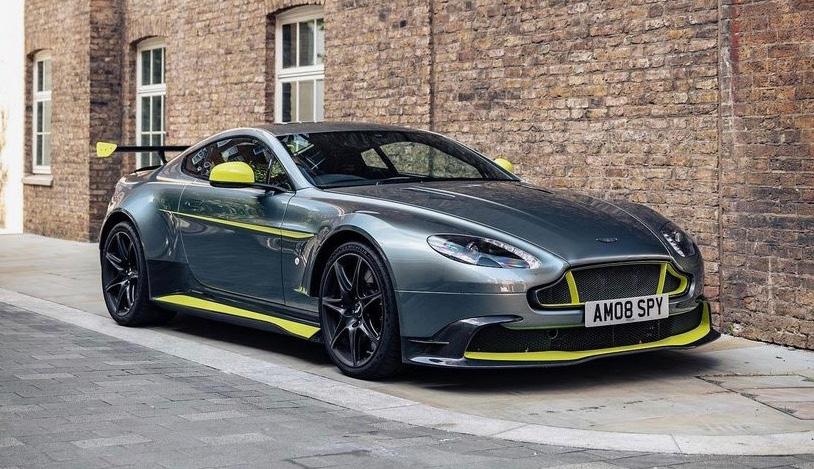
2017 Aston Martin Vantage GT8
Just 375 miles from new, one of 150, 6 speed manual, like new condition.

1969 Jaguar E-Type Series II 2+2
Manual gearbox, professionally converted to right-hand drive, freshly serviced and MOT’d, offered from a private British classic car collection
2009 Lamborghini LP670-4 Super Veloce
1964 Alfa Romeo 2600 Spider
1 of 186 produced, right-hand drive and low mileage, exceptional condition, UK registered with taxes paid.
Matching numbers, fully restored, accompanied with Alfa Romeo Heritage certificate and supplied new to the USA.

2017 Alfa Romeo Disco Volante
No. 6 from a total of 8 created, presented in a one-off colour; Blu Largo, the only Disco Volante with bespoke woodwork - a “Road Yacht.” Offered from a private connoisseur’s collection.
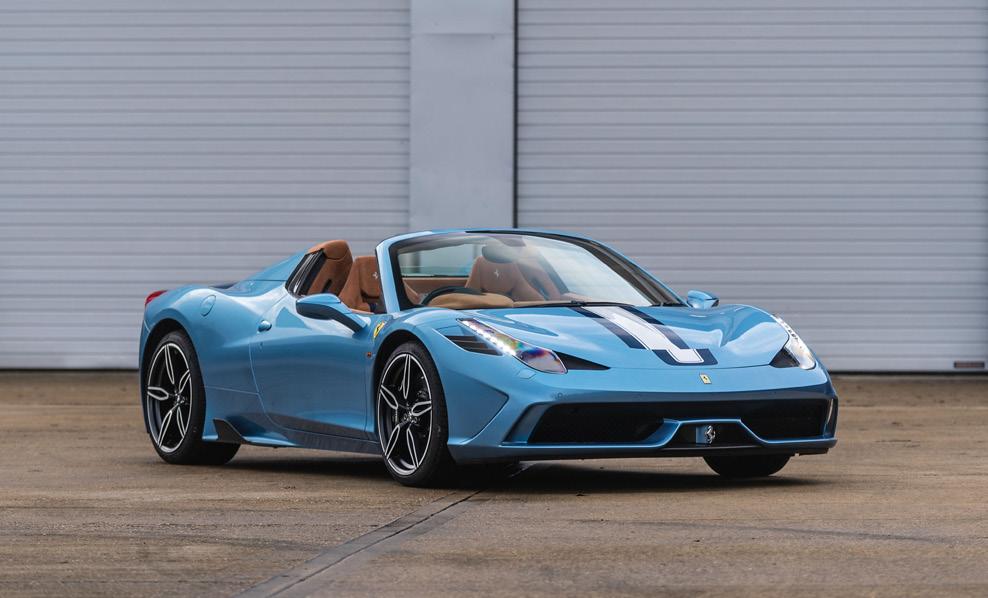
2015 Ferrari 458 Speciale Aperta
1 of only 499 produced, 1 of 49 right-hand drive, UK supplied, finished in Azzurro California and exceptionally well optioned.

Since the last issue there has been much change and all for the better!
Starting with the first major event of the year, the London Concours. The sun shone on the hallowed lawns of The Honourable Artillery for three consecutive days, enhancing the 80 significant cars on display.
This year I was invited by the organisers to participate as one of three judges. It was no easy task to pick the winner of the Italian Berlinettas out of the eleven offerings from Alfa Romeo, De Tomaso, Ferrari, Fiat, Iso Rivolta, Lamborghini, Lancia, Lamborghini, and Maserati. In the end we settled on the outstanding Maserati Ghibli and the owner accepted the trophy, along with a limited edition print from The Pullman gallery, donated by Moss Automotive.
On the second day I managed to get some time to walk around and take in everything. It is always a pleasure to see a nice DB5 but three of each, Coupe, Convertible and Shooting Brake together is a first for me and they were all in factory Vantage specification. Known as The Icons Collection, it was put together over a twelve year period and all three cars are in as new condition and available through Aston Martin Heritage specialists, Nicholas Mee & Co.
I was also keen to look at The Everrati Porsche 911, based on my favourite, the 964. They are fitted with the same suspension and brakes as my work in progress 964. Neil Bainbridge of BS Motorsport, who is doing my 964, worked on the Everrati car and recommended putting the tractive suspension in mine. While at the show I was introduced

to the U.K distributor Steve Bennett, who offered to visit me and demonstrate, an offer I could not refuse.
I was confident in Neil Bainbridge’s opinion but the hour spent on some delightful Hertfordshire B roads surprised me. There are five settings that are changed from a control panel in the car, with tyre loads and changes in the road surface communicated from the control unit to the dampers individually, reacting at between 6 and 10 milliseconds. It is a phenomenal difference, without compromising the character of the car. After the test drive we talked for a couple of hours about all things Porsche, time well spent.
The Z4 track car is back on the road and was exercised at Brands Hatch with The 96 Club and Goodwood with RMA. Both well organised and in glorious weather, my driving less so! The car is currently being fettled by Pursuit Racing in Bicester, a new venture headed by Oliver Cable. They have a brand new premises,
equipped with workshops, storage and the best simulator I have ever laid eyes on. They will facilitate your entry to motorsport at any level with tuition, race preparation, race support and car hire. The launch evening was well attended and showcased the facilities and some of the pursuit cars.
The reading continues and a copy of A French Kiss with Death, arrived at the time of the last issue. It charts the life in cars of Steve McQueen, his career in racing, the Le Mans 24 hr race and the making of his film Le Mans. This is the best part and tells the story from start to finish, with lots of detail on the cars involved and some entertaining stories behind the scenes from the key players.
Lockdown should be a thing of the past by the next issue, so get out and enjoy the upcoming events and your cars.
Until next time.
Michael @ Moss Automotive

After working for 12 years on the design of Bugatti Automobiles, Berlin-based Etienne Salomé decided to create his own company: ‘Salome Yachts and Design’, He officially launched with his team the ‘Atlantic Project’ in September 2019 during the Monaco Yacht Show, a 12 meter sport tender, immediately recognisable on the water, a true head-turner. He keeps one foot in the automotive industry as a consultant for various car manufacturers including the supercar/ hypercar manufacturer Koenigsegg.
The Bauhaus is a world famous architecture style that was started in 1919, and one of its most important principles is minimalism.
In this movement, artist favoured linear and geometrical forms, avoiding floral or curvilinear shapes, illustrating the principle of form follows function.
The concept of less is more is underlined by the idea of simplicity and effectiveness. Basically, there is no need for additional ornamenting and making things more and more beautiful, they are just fine as they are!
I can personally imagine back in 1947 those principles must have been adopted when designing the first ever Land Rover Defender.
This is a real machine, a tool, deprived from any cheap styling. Separating its design from any fashion or trends, and making it totally timeless.
When I started this project in collaboration with Del Gregory at B500X and the Arkonik brand, it was clear we would have to dig back to the essence of this amazing automobile in order to define its future and the guideline of our new design. It was very clear that even though the Defender is a very reduced machine, it still answered some mass production requirements and as we would totally hand craft our limited edition of 5 units only, it allows us even more artistic freedom.
We selected to re imagine the beach cruiser style, and simplified it to the extreme, getting rid of all unnecessary elements : the door openers were first to go, as you can always reach to the interior opener anyway. The fuel filler cap was moved to the loading bay, directly accessible from the rear hatch. These items helped clean the last details of the body side.
The biggest change has taken place at the front of the car, removing all items from the custom front
fenders, giving them this naked look from its ancestors.
The headlights are placed in the front grille, which is usually a no go in car design as you want to create maximum width for the car’s proportions, but here the proportions are created by the fenders themselves and not the headlights or day time running lights. The first defender had also its headlight in that position, a little homage to the first Series 1 of 1948 with easily identifiable design cues.
The spare wheel is removed from the front bonnet, and a tailor made system has been engineered to flip the front windscreen and keep it floating horizontally.
All rivets from the body are hidden or removed to create the simplest of all Defenders, a true design statement.
Three basic low back front seats complete the scaled back look, once again for pure functionality and simplicity.
The engine is a V8 Buick 3.9L with a 5 speed manual gearbox, a mechanical experience, with intoxicating sound, while open to the environment.
This Defender will be like no other, strictly limited to 5 units. A narrow body SWB90, handcrafted from the ground up by the experts at ARKONIK in Somerset England.


By James Vellacott
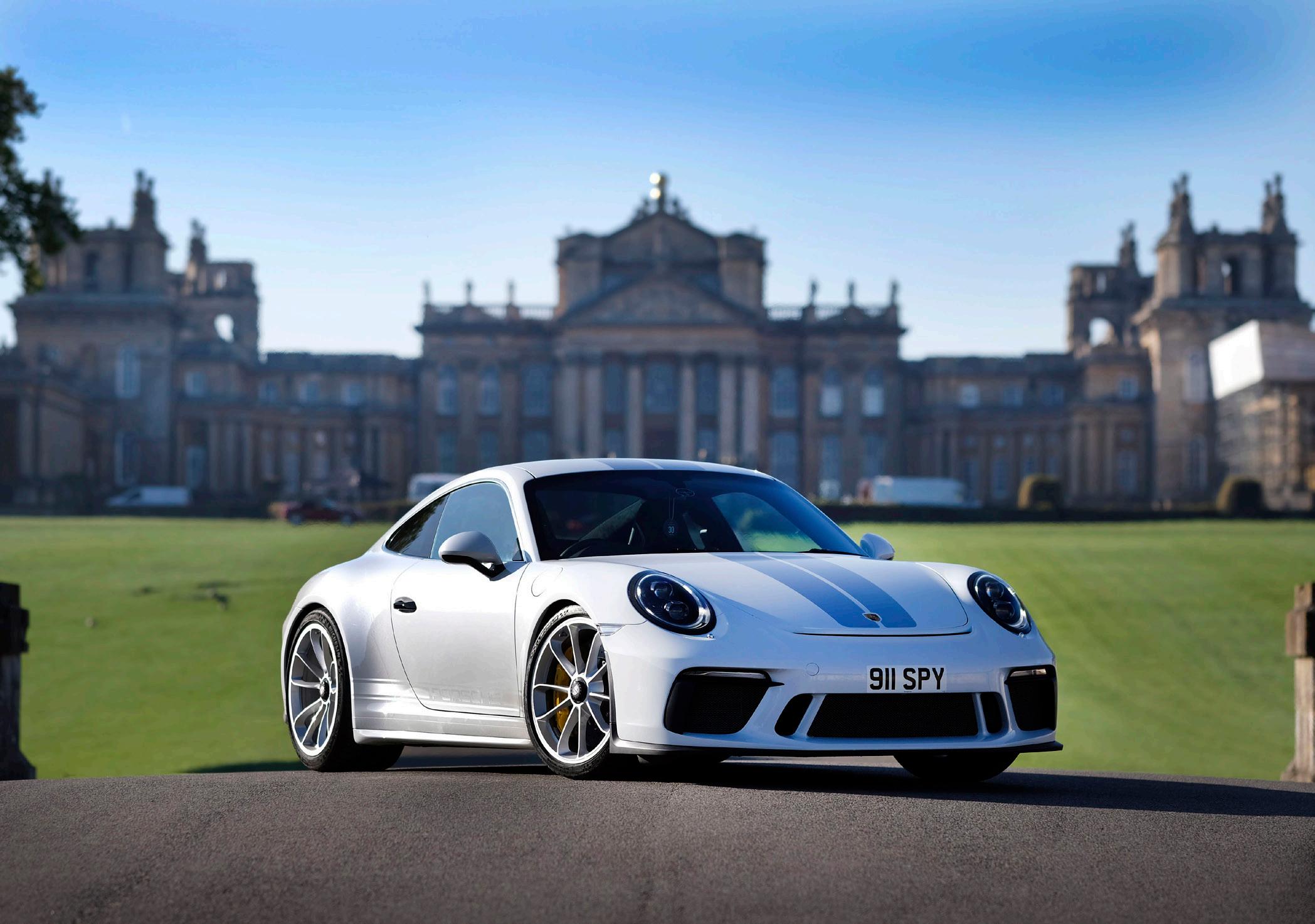
My quest for the ultimate analogue drivers car has been a long one. Back in 1987 virtually all affordable cars were analogue. Rev matching and rowing the gears was part and parcel of car ownership for all us young enthusiasts keen to impress our mates at the bus stop.
At 17 I remember rocking up at the local Rugby Social Club in a deteriorating
mid engined Fiat X19 and telling the barmaid that it was a Lamborghini. I also remember heading off to Butlins with said barmaid and shortening the X19 by a couple of feet after losing the back end on a damp road. Only my ego was damaged thankfully.
At that point I decided that conspicuous Italian cars of any kind were not likely to be a part of my petrolhead future.
After an assortment of hot hatches and an all too brief spell in a superb Honda
S2000, in 2004 I owned my first Porsche 911. It was a 4WD manual 997.1 4S. After trying to drift it, I ended up fishtailing and pointing the wrong way on a roundabout. At that point it was concluded that Porsche had designed the 911 to retain as much traction as possible as the alternative was often an undesirable outcome.
With this in mind I followed on with a 2 wheel drive 997.2 2S version with the Porsche double clutch auto gearbox (PDK). Just Wow! After using the
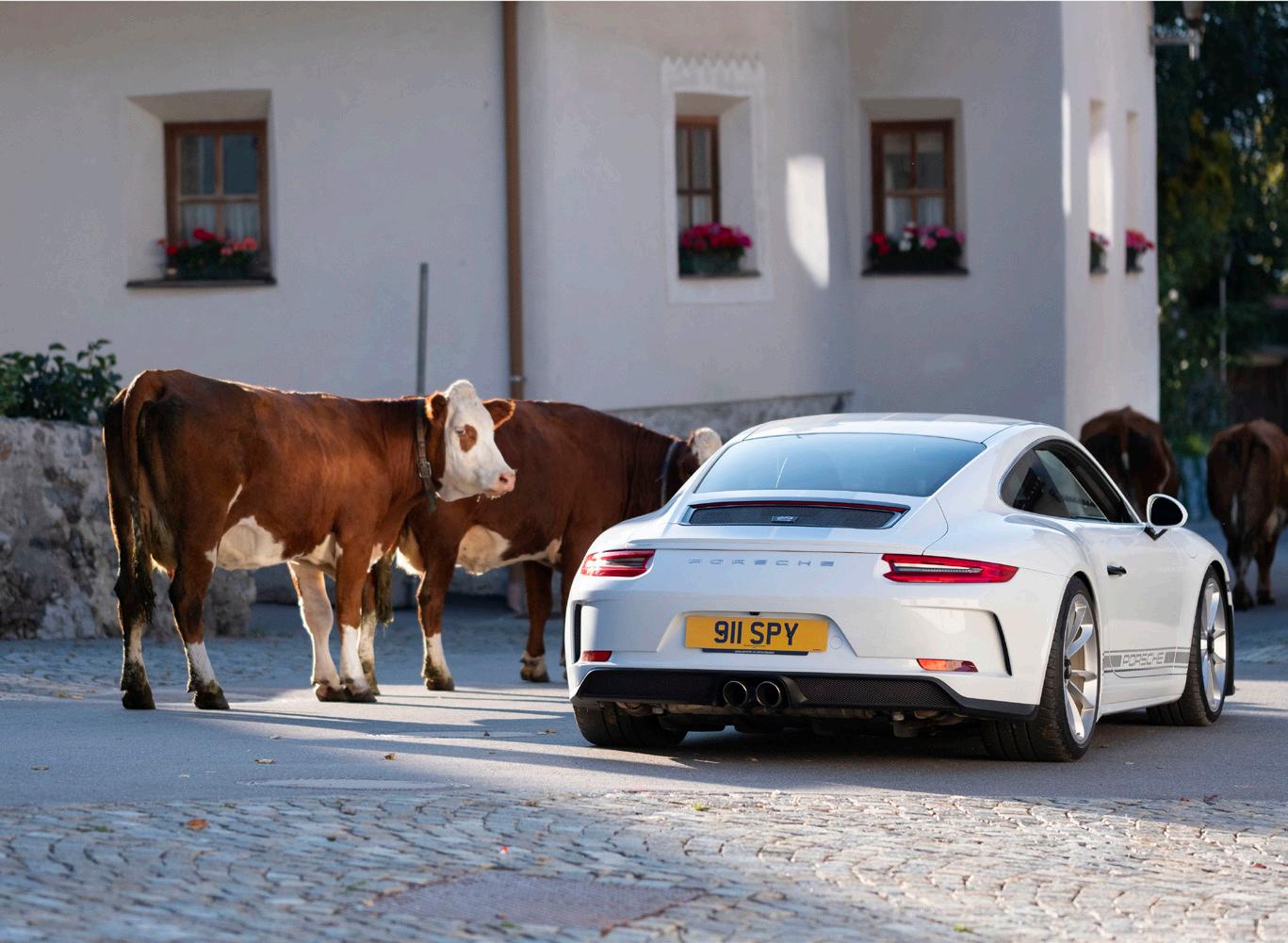
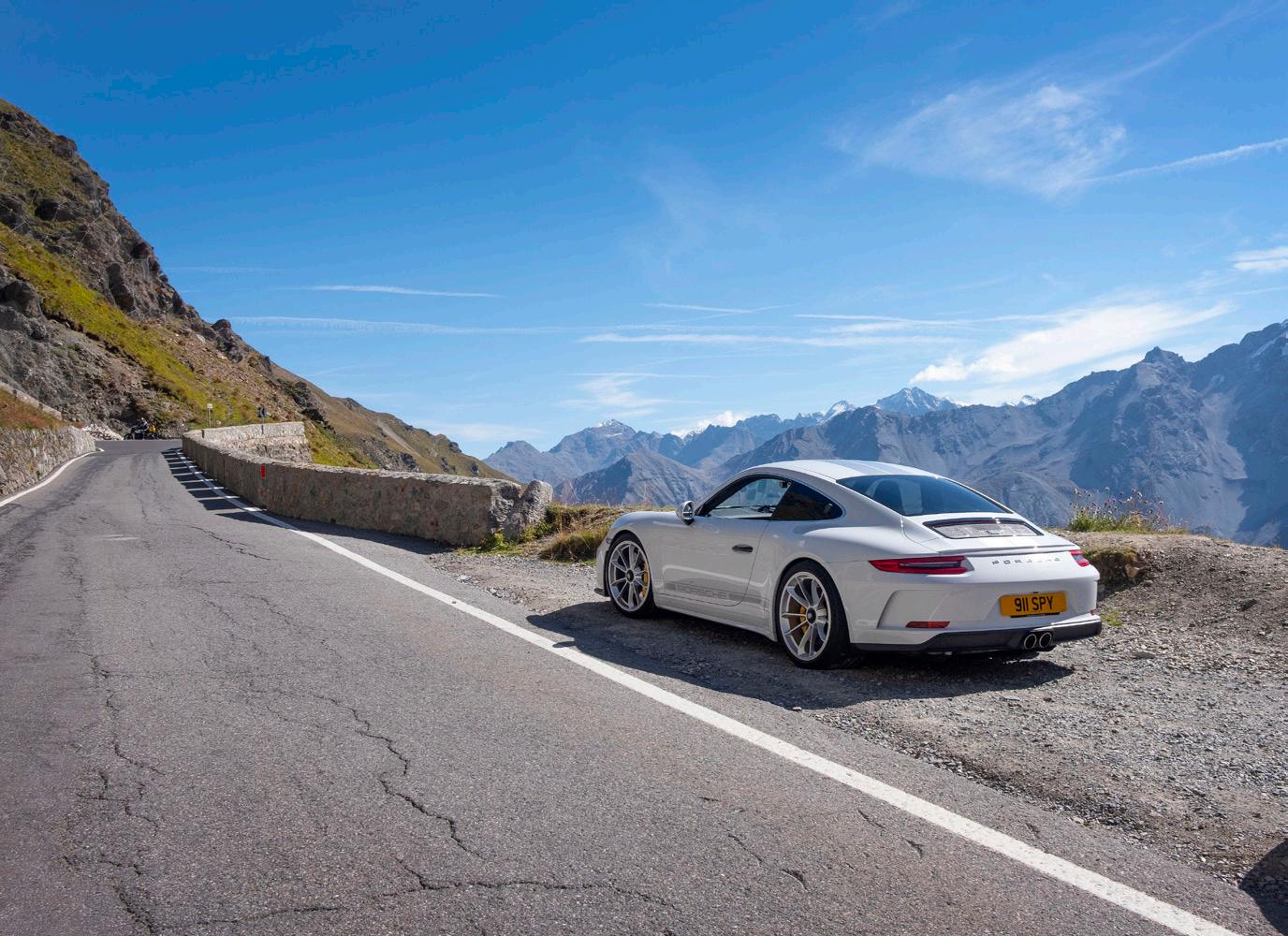
launch control and banging through the sprockets I realised how fast these cars really are. Although the 0-60 and top speed figures were similar in both 4WD and 2WD cars, the 2 wheel drive version just felt lighter and pleasantly but controllably skittish, especially on the B roads.
With the driving elation I found with the PDK 2S, I started to miss the manual gearbox. Although the PDK auto box was surgically precise and indeed faster, there was also a loss of the authenticity and fun engagement
that could be felt with a manual clutch and gear stick.
In 2015 after moving on to a later model 9112S (991.2), I was made aware of a back to basics car that would bear a 911R badge and was being developed in Weissach Germany, home of the Porsche GT race cars.
The car would be wingless, offered as a 6 speed manual only, it was to be light and given the naturally aspirated engine from the GT3RS. Sadly it was also totally unorderable by the average
Porsche owner like myself as only 991 units were ever built, and these were instantly reserved for the car collections and big spenders.
In 2017 Porsche launched the 991.2 GT3 which was offered as a manual if you so desired, my fanaticism as a back to basics Porsche driver had been recognised by my local Porsche Centre and my request for a new GT3 had been approved.
I was also aware of a rumour that the new 991.2 GT3 was to be offered in a wingless version for the first time ever. It would be named the 911 GT3 Touring as a tribute to the 911RS Touring of 1973.
With the planets aligning for my ultimate 911 I excitedly went onto the forums to ask the purists as to how I might best spec a GT3 Touring. A large majority were totally against the idea that Porsche might offer a wingless GT3, “sacrilege! A GT3 should have a wing”.
I understand their spiritual point of view, but unless you are in the top few percent of track drivers, I cannot see how a wing would improve the driving experience for my road trips around Europe, if anything it reduces the excitement in a lively rear end 2 wheel drive Porsche.
The Touring was announced a few months after the regular version was launched and I managed to re-spec the car 2 days before my original winged spec was locked down with the factory.
I decided on a classic look with subtle stripes in the vein of the 911R. Simple Carrara white with aftermarket GT silver stripes running down the centre of the car to distinguish it from the edge running 911R stripes. Folding bucket seats would also allow a firm grip on the hairpins of the Alps and Pyrenees and also let me load the rear section with wine from the vineyards of northern France on the way home. I decided that the car deserved the carbon ceramic

brakes, an expensive option but they look great and should cover their value if the car was ever to be remarketed. The wheels are standard silver and the door handles are painted black to contrast with the white giving a more retro look.
I took delivery of the car in Jan 2018 and was absolutely blown away by the naturally aspirated 4 litre engine that redlined at 9000rpm! I went out every weekend looking for fast twisty roads with a nice destination. I had never driven a Porsche GT car and almost couldn’t believe the leap in pure engagement with the car. It was tighter, faster, lighter in the corners, more reactive in acceleration, steering and braking that I have ever felt in the previous cars.
The GT3T is a relatively light car (200kgs lighter than a 911turbo) with 500hp and rear wheel drive, does command some respect but also instills confidence as it really does become part of the driver.
In July 2018 I drove the car to Goodwood for the Festival of Speed, I was glamping
in a motorhome on site there and met the Director of the GT cars product line Andreas Preuninger who was staying in an RV nearby. He walked by the car every day to head down to the track and one day he stopped to have a chat with me about the car. After some talk about the spec he agreed to sign under the bonnet and jumped into the frunk to get a better angle. We chat on Instagram from time to time and he even asked me to do a Merry Christmas video for the team in Flacht last Christmas as one of their biggest fans.
Late 2018 I drove the car across the Alps into Italy to stay on Lake Garda, and then in 2019 I drove it across the Pyrenees to Barcelona with a fellow winged GT3 owner.
People have said that you can’t really use 9000rpm and 500hp on real roads, well this is certainly not the case. Once you know the car you soon find yourself bouncing off the rev limiter on fast, dry sweeping roads. It’s difficult to explain the adrenaline kick you get from all four limbs working together as you climb a fast mountain road shifting gear before
a corner with one hand on the steering, one on the stick and both feet working in unison. If all elements work effectively a great sense of ‘nailed it!’ satisfaction is achieved as you look towards the next turn.
The GT3 Touring isn’t for everybody, with its wingless body and tiny ‘GT3 Touring’ badge only the more discerning Porsche nut actually knows what is under that slightly lower and wider Carrara White shell. At a supercar show it gets the least attention and likewise can be discreetly overnight parked on a European side street without attracting unwanted attention.
The GT3 Touring was largely misunderstood when announced, now it has firmly staked its claim as a truly analogue future classic. More importantly it’s a car that I want to drive as long as I am able. Looking into the future and forthcoming models, it seems we are approaching the end of the era of the new analogue car.
Without a doubt, for me, this one is a keeper.




Gioel is a technology entrepreneur passionate about analog machines, food, photo, friends and great experiences in beautiful places. Raised in Milan, educated in the USA as an engineer. Currently on sabbatical pondering how to best integrate work and life.
ummer of 2021 presents a unique combination of ingredients: a relief from pandemic lockdowns enabled by vaccine rollouts, a world largely devoid of tourism, and for many including myself a new and deeper understanding of the value of personal time, family, health, and sharing experiences with friends.
This was the backdrop for me and 3 friends’ return to proper road rallying which took place during the recent 2021 edition of 1000 Miglia in Italy from June 16-19. This year’s event had been postponed from the traditional May timeframe and was exceptionally well attended: close to 400 historic cars and an additional 100 from Ferrari Tribute, the most ever.
We were blessed with sunny weather, extraordinary cars that ran beautifully for the entire week, spectacular food and beverages, and above all an entire country that celebrated and cheered us on the entire way. Though we followed the route the vast majority of the way, we took some liberties adjusting for our own meal choices and an occasional highway stint when we were late for dinner or simply wanted to break free of the remaining 100+ Ferrari that were in the Tribute convoy. Thus was born our first edition of ‘1000 Miglia Modificata’.
Planning for the trip started in January 2021 with an incredibly fortuitous find
of a two owner Ferrari F50 in Italy. The car had been dormant in storage for about 10 years and previously owned by a well known Italian Gentleman Racer. An F50 has been on my Analog Legends roadmap for some time and I had just missed a very nice example in the UK that was sold in December. I jumped at the opportunity and arranged to have the car refreshed at Autofficina Bonini in Reggio Emilia. Over the course of the Spring, the amazing and knowledgeable Bonini team went about returning this F50 to running order in preparation for its 1000 mile re-introduction to its home country. The only modification that was made was installation of a Tubi Style sport exhaust including manifolds. This setup retains sport mufflers and is a great and reasonable balance of loudness and exhaust note improvement. We arrived in Reggio Emilia in our support vehicle, a Lancia Delta Futurista by Automobili Amos, also recently completed and newly delivered the week of the event. It was wonderful to share the Futurista, number 8 of 20, with the team at Bonini and to hear their thoughts on the work done to this other Italian classic.
The next 4 days saw us alternating driving and shaking down the two cars through mountain passes, countryside roads, highways and city centres. In addition to the standard route provided by the 1000 Miglia, we added stops in Milan and Bergamo bookending the trip and completing an additional 300 miles in the cars. We were greeted by



the warmest of welcomes and passionate enthusiasts at every corner. The entire journey is conducted on public roads which are those that were used in 1957 and is led by police motorcycle escort coordinated with local traffic officers through the dozens of towns. The police would lead and clear the roads ahead for the convoys such that participants could safely travel at pace. Selection for duty as an officer for the 1000 Miglia is a special privilege that caters to passionate Italian police who consider it an honour. It was great fun to look in the rear view of the F50 and see flashing lights that we didn’t have to worry about and were glad to see.
Ahead of the first drive I was keen to compare the F50 to other analog favourites, Porsche Carrera GT and the F40. The F50 exceeded our collectively high expectations and proved to be even better than its specifications and reviews led us to believe. It is far easier to drive around town and for long stints than its older turbo-charged sibling and on more than one occasion we discussed the remarkable jump in overall vehicle engineering and finesse that happened in less than a decade between these two Ferrari models.
In contrast to the F40, the F50 is a revelation of delicate controls, surgically

precise throttle response, good brakes, chassis sensitivity, and comfortable ride. The driving position is natural and less kart-like than the F40 and pedals retain great feel but are lighter and rather smoother in the F50. The entirely unassisted steering and the gearbox in particular are highlights worth delving into. The clutch can be handled similarly to a Carrera GT: no throttle application is needed to get off the line or for a hill start, just let the onboard computer handle everything.
As with Carrera GT the combination of carbon tub, open top and a screaming naturally aspirated engine delivers a thrilling proposition, which is elevated into an even purer form of analog driving in the F50. The decade that elapsed between these two rivals is directly noticeable in additional ‘non essentials’ in the CGT that add to weight and layers between driver and machine. The F50 benefits from a combination of direct steering without power assist and no driver aids whatsoever (including lack of ABS) which take the analog formula to what must be its most extreme level for production cars of the era.
Our Futurista went well beyond support car duties and proved to be the ideal transport for the twisty climbs and
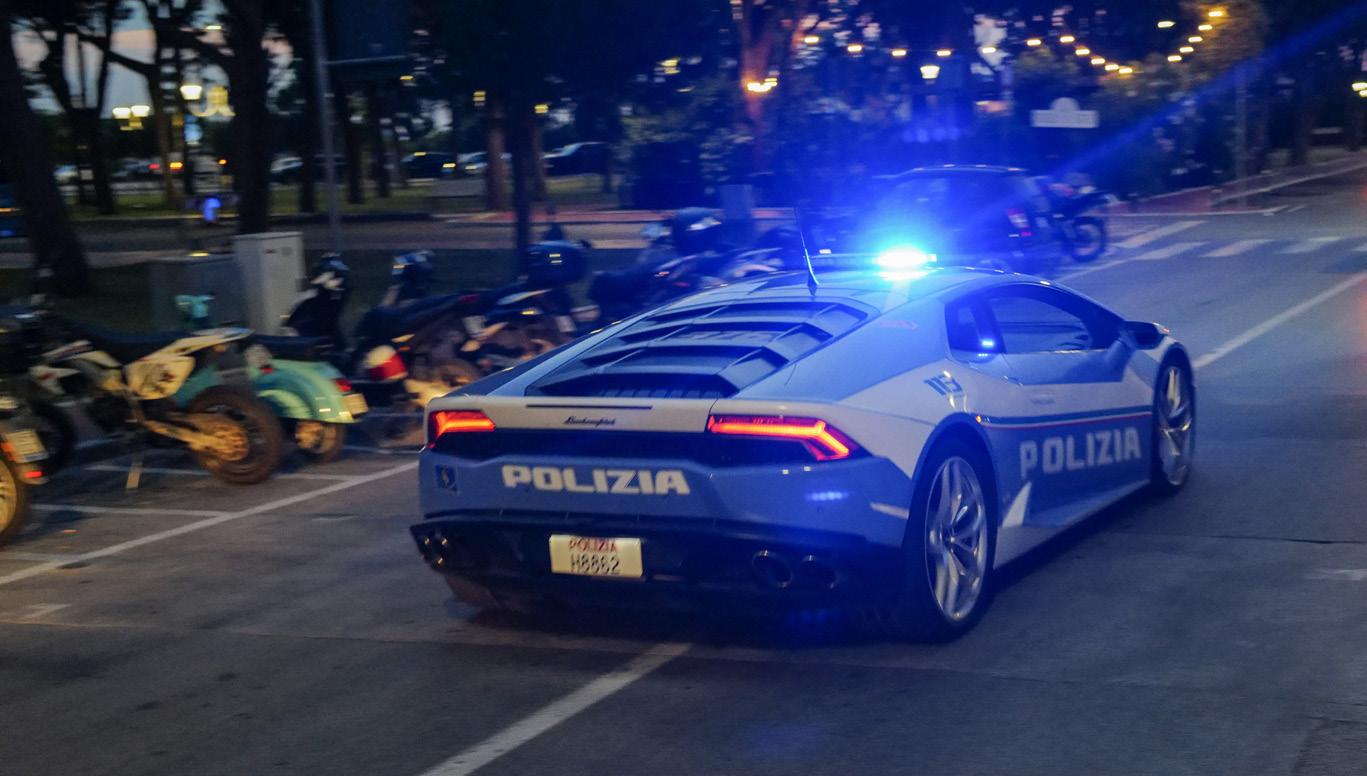
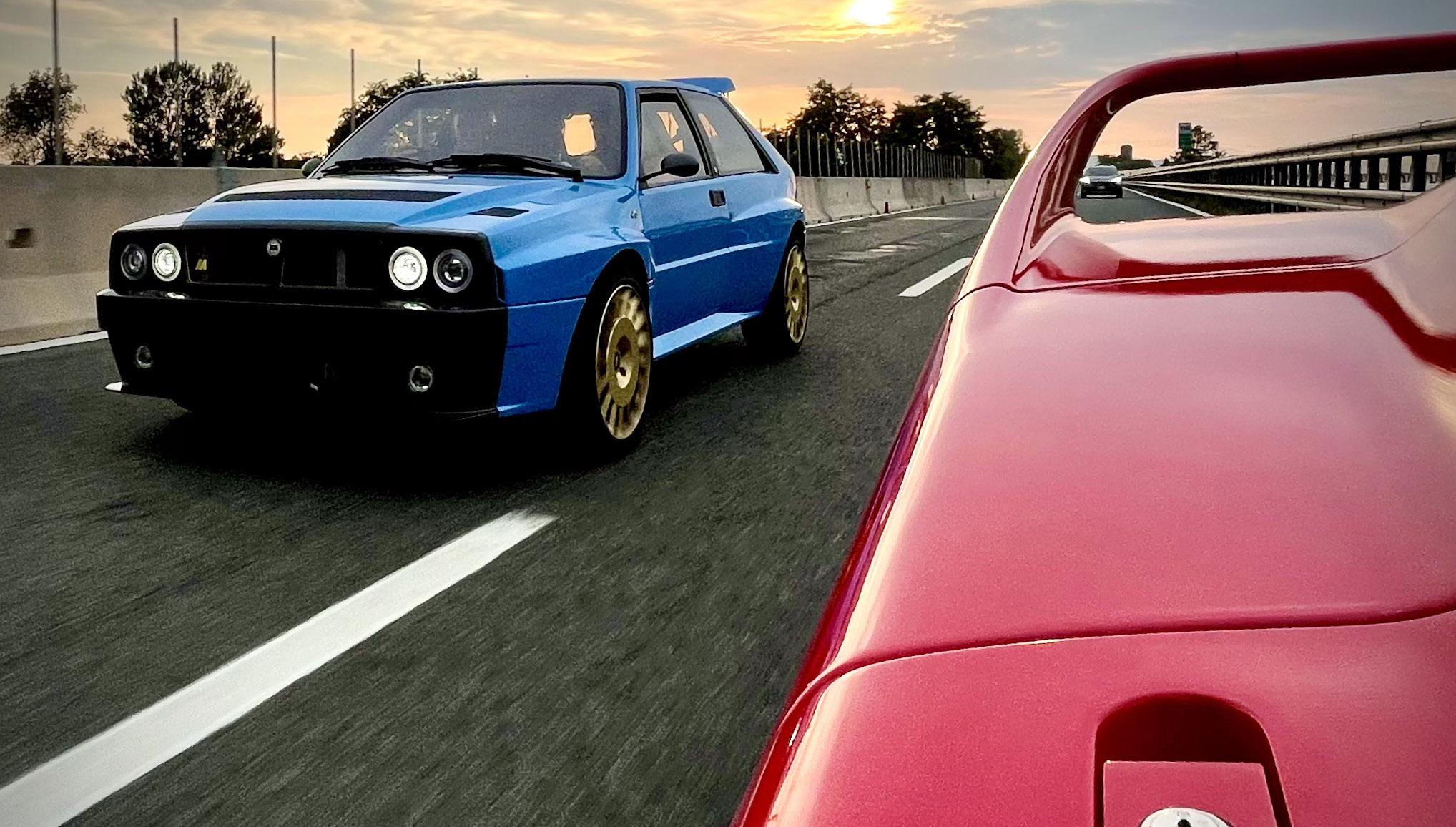

switchback routes we encountered on Passo Della Cisa and surrounding Tuscan country roads. The Amos team has added to and improved the fundamental characteristics of the Delta Integrale without changing its underlying personality: a heavily turbocharged, glued-to-the-road hatchback that loves to dart from corner to corner. The turn in has been substantially improved and modernised by way of revised front suspension geometry, an uprated engine producing 330hp and modernised brakes, cooling and transmission. These mechanical elements are married to an exterior treatment that does away with the rear passenger doors and replaces the hood with a carbon ‘Cofango’, and a new interior from dashboard to seats. We were particularly thankful for the USB charging port that was added to the Delta which turned out to be the only USB


charger we had available during critical content production crunch time during our day journeys.
At the end of the official route we met up with the remainder of the Ferrari Tribute convoy and as a final unplanned highlight I was able to drive the F50 with my father down Corso Venezia in Brescia for the red carpet ceremony.
These few but intense days were a magical, likely unrepeatable experience that couldn’t have come at a better time, reminding us that what matters most is spending time with those we care about and sharing special experiences together with other passionate people. We look forward to next year!
Gioel @redshift75

specification
Images: Scott Paterson

Recently sold, APS Specialist Vehicles were delighted to offer for sale this very special 2021/70 Audi RS6 Carbon Black.
This high specification RS6 is finished in Nardo Grey over black leather and alcantara and has covered just 1,900 miles with its single owner from
new. Delivered new on the 15th of January 2021 to a long term client of APS, this RS6 has been used sparingly and was presented for sale in absolutely perfect condition.
The Carbon Black RS6 already features an extensive standard specification from the factory and in addition this example has the following factory options:
- Panoramic Glass Sunroof
- Comfort & Sound Pack
- Bang & Olufsen Premium Sound System
- RS Extended Leather & Alcantara
- RS Sports Exhaust System
- Carbon Interior Inserts
- Parking Assist Plus / Front, Rear & Side Cameras
- Red Calipers

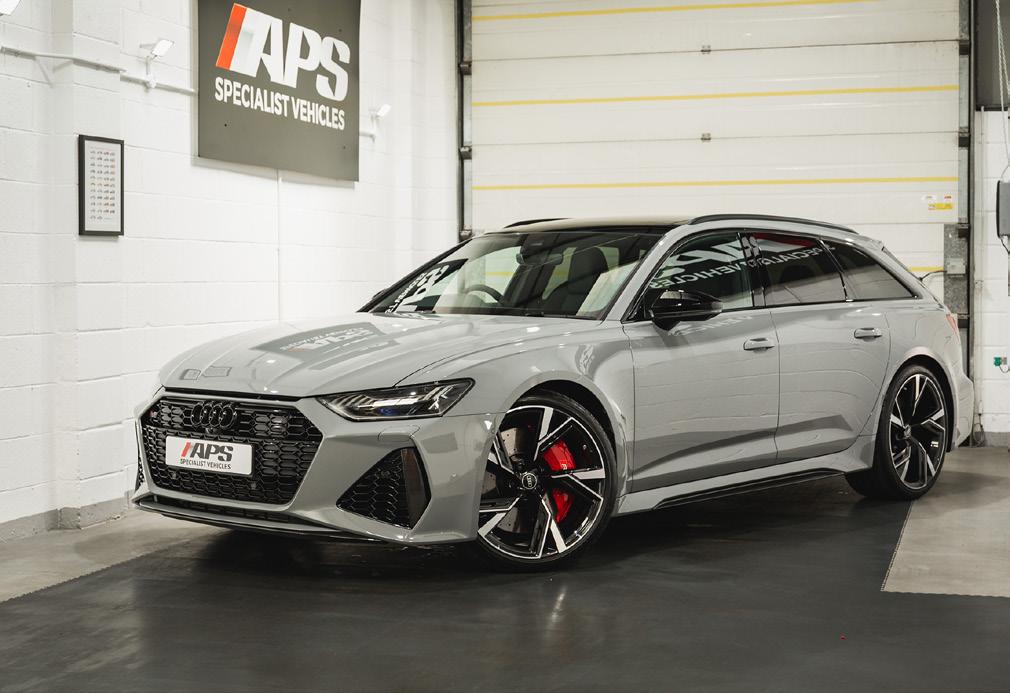




This outstanding RS6 has just been treated to a full ceramic paint coating and the combination of Nardo Grey paintwork against the carbon fibre and gloss black trims means the car looks utterly stunning.
Moving inside the car, a blend of black leather, alcantara and carbon fibre creates the perfect space to enjoy the staggering performance from its twin turbocharged 592bhp V8 engine.
As has always been the case with the RS6, the beauty of this car is its outright point to point and long distance capability while also offering utter luxury and practicality: True all-weather supercar performance in a car that can carry the whole family and luggage.
Sold with the balance of its Audi warranty and presented from the APS showroom based in Brackley, Northamptonshire,
they welcome views by appointment only for any of the cars they have in stock.
APS are FCA approved and can offer competitive finance arrangements to meet your requirements and nationwide delivery.
This one went very fast!



Arkonik Brand creator and guardian. Andy joined the Defender specialists five years ago after 20 years agency experience, whereby he gained an enviable portfolio working with brands such as Sony, National Trust and Honda. A petrolhead at heart, Andy loves all genres of automobiles from spectating at grass roots motorsport level to marvelling over automotive exotica on the hallowed turf of Pebble Beach.
Well, it’s taken over a year but we’re finally back on the UK show scene.
The London Classic Car Show at Syon Park played a galant host to our first event since pre-Covid times when we exhibited with TAROX® brakes at the Autosport show last year.
Surrounded by a plethora of rare and classic gems, ‘UJO’ took centre stage on our stand and immediately drew the crowds. It was great to speak to so many fans and owners alike, sharing their unique stories yet collectively bestowing us with praise and compliments for the level of detail and attention lavished upon our Land Rover 110 ‘restomod’.
The event ran superbly, Covid compliant and judging by the number of attendees, a complete success for all. We were proud to attend and support and will certainly aim to return in 2022.
Our next planned event is at CarFest South in August. Curated by petrolhead and avid fundraiser Chris Evans, it’s an event which goes way beyond cars and is very much aimed at the whole family, with music and fun activities interwoven with a rich display of automotive candy.
Behind the scenes we have been busy collaborating with REC Watches to produce a limited edition timepiece. Taking inspiration and literally parts from the original ‘UJO’, with the dial cut directly from it’s rear door. Launching 8th July, it will be a strictly limited run of 302 pieces and you can register your interest at www.rec-watches.com
Meanwhile back at HQ, our unique Étienne build continues to gather momentum as it moves through our production process. Del from B500X came down a few weeks ago and was very pleased with what he found. The vehicle is now a rolling chassis and has had its panels dry fitted for perfect alignment. Once the bodywork is arrow straight, it will be primed ready for paint whereby it will be coated in Pennine Grey, a classic Land Rover hue and one which will showcase the unique lines of this bespoke Defender.
Across the pond our clients continue to fly in and drive out. The majority of these builds have had our LS3 engine swap and auto transmission upgrades –the perfect combination for tearing up the highways stateside.
A big development for Arkonik is that we can now offer restorations to clients’ own vehicles. This is an exciting addition to our core business. Our expert technicians can completely restore and enhance clients own Land Rovers. From the original Series I, Range Rover Classic right up to the modern-era Puma Defender models.
Infinite customisation options are available and clients can choose to keep either the original engine or go for a huge increase in power with our popular 6.2 LS3 engine transplants mated to a 6 speed automatic or manual transmission. Like our Legacy builds, all restorations start with a detailed design consultation and come with a 12-month warranty for complete peace of mind.
We have already started production on a number of these restorations and it will be great to see these right-hand drive Defenders transformed and given a new lease of life.
Looking forward to seeing you all at our next event, stay safe.
We start ageing when we finish learning
Etienne Franzak

As a new French sculptor, I will let you imagine my feeling when Del proposed to me to have a feature in his magazine. Over the Moon. Thanks again.
An economist by training, it was around the age of 30 that I decided to focus a know-how which had already been flowing in my veins: Cabinet-Making. Wood speaks to me! I am in my workshop with all these species of trees, these smells, these different wood grain and I am learning. One thing is obvious, I’ll never be finished learning with this organic material.
The idea behind my sculptures comes from inspirations which have grown
in my head. Classic racing car, old wooden boat, not to mention war aviation as well. The story begins in 2019: I wanted to build a wooden car body incorporating the techniques of designing a boat hull. The encounter with a Riva on Iseo lake in Italy on board of my mahogany canoe from the 50s left traces. Which was a challenge in the execution of the know-how and subsequently became my signature.
My approach is simple. From the tree to handcrafted art. Each sculpture is unique; drawn, sculpted and assembled by the same hands. The scale is unique too, between 1/3 and 1/2. With a thickness of between 1.4 and 1.6 mm each slat of wood is shaped with my favourite palm plane and then held with love by brass nails.
In 2020, my vision of the Belly Tank was born. Strapped to the back of my old Chevy Apache from 1958 I decided, encouraged by enthusiastic people, to share my work at the M.A.D gallery in Geneva. The exchange with the team gave me confidence about the path I was about to take. I am taking the opportunity to thank Maximilian Busser, founder of the watch brand M.B & F and Hervé Estienne, gallery director, for their trust. I strongly invite you if you are passing through Geneva to visit them, this unique place is filled with incredible wonder and soon the Bugatti Type 59 Grand Prix from 1934 will be displayed.
Inspired by Kustom Kulture since my young age, “The Missile” is a 1/2 scale sculpture of the famous Belly Tank
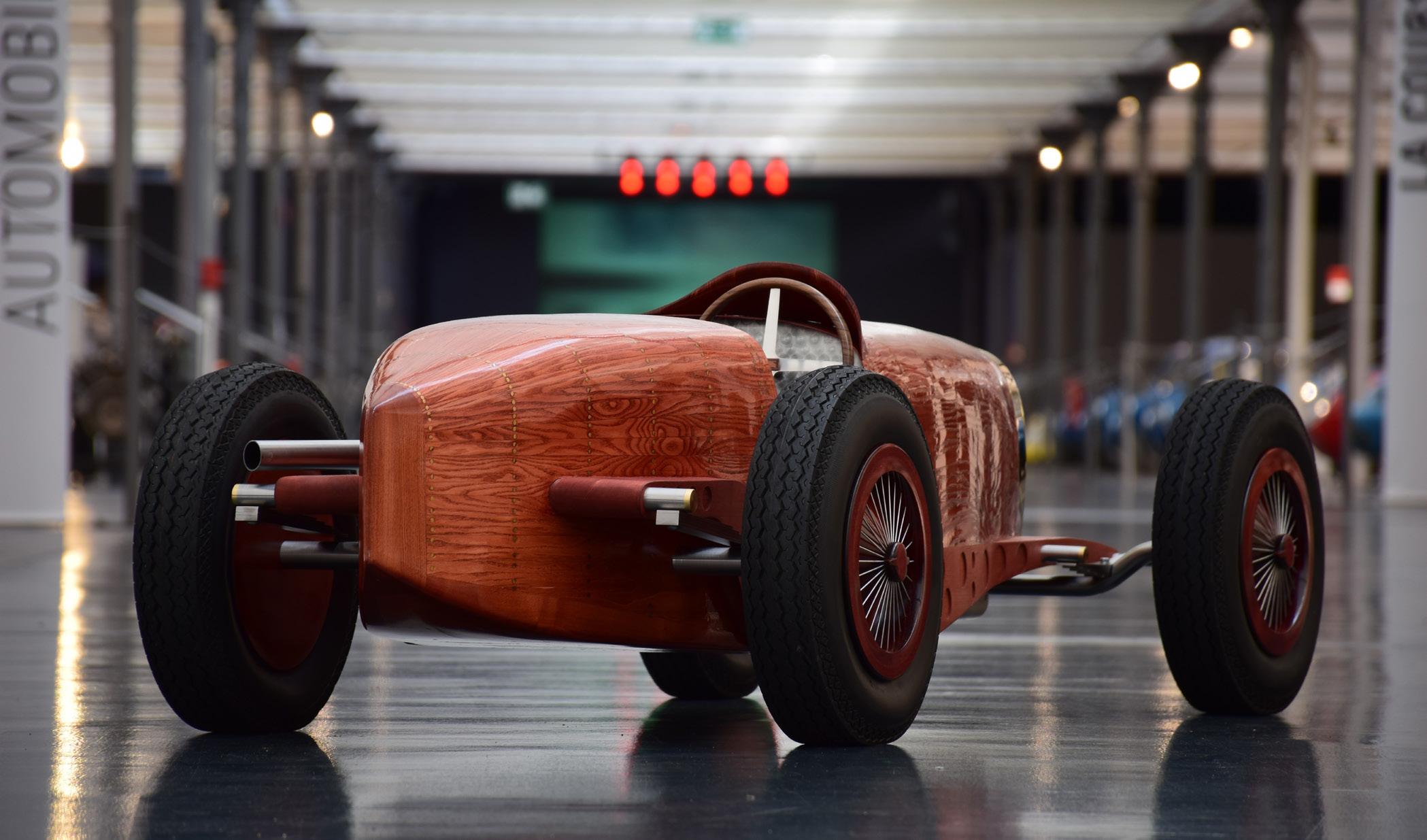
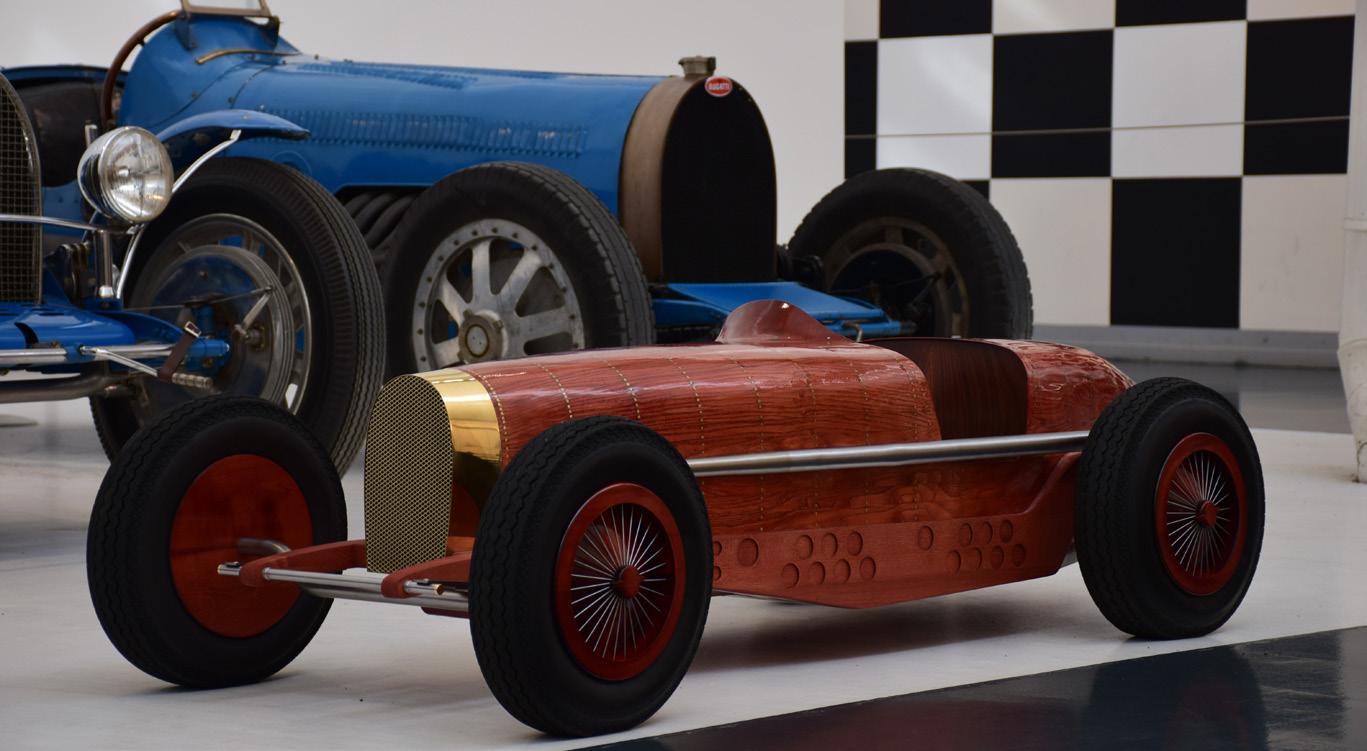

built after WWII by the So-Cal Speed Shop garage in California. These old additional fuel tanks made it possible to prolong flight time during conflicts. In large numbers in the military surplus of the time, their aerodynamic shape quickly interested speed racing pilots. Made of elm, amaranth wood and Gabon ebony - 404 brass nails.
“The Walnut Arrow” is a 1/3 scale sculpture of the legendary Auto Union Type C from 1936 which won the Grand Prix championship that year. Third racing car built by the brand, the Type C is one of the famous “Silver Arrows”. Bernd Rosemeyer won three of the four Grand Prix in 1936. Made of walnut, oak, Gabon and Macassar ebony - 1216 brass nails.
“Le Pur Sang” is a 1/3 scale sculpture of the iconic Bugatti Type 59 Grand Prix racing car from 1934. The Type 59 will be the last real racing car of Bugatti. Considered by observers to be one of the most beautiful singleseater of this racing era. Made of ash, lime wood, cherrywood, walnut, rosewood and amaranth marquetry - 1026 brass nails.
A creative adult is a child who survived!



Mark and Jenny Mummert are big fans of Arkonik. So much so, they now have not one, but two of the companies Defenders at home in Big Sky Country, better known as Montana in the US.
Mark first became aware of Arkonik around four years ago, and admits to immediately falling for the looks of the Arkonik Defender 110.
As it turned out, Mark and his wife Jenny could not have been more pleased with their first order and soon made the decision to get a second
Arkonik, this time after discussions with the UK HQ deciding on a 130 truck version.
Mark & Jenny’s 110 was named Cervus, which is the Latin name for Red Deer, which Mark admits to seeing lots of where the couple live in Montana.
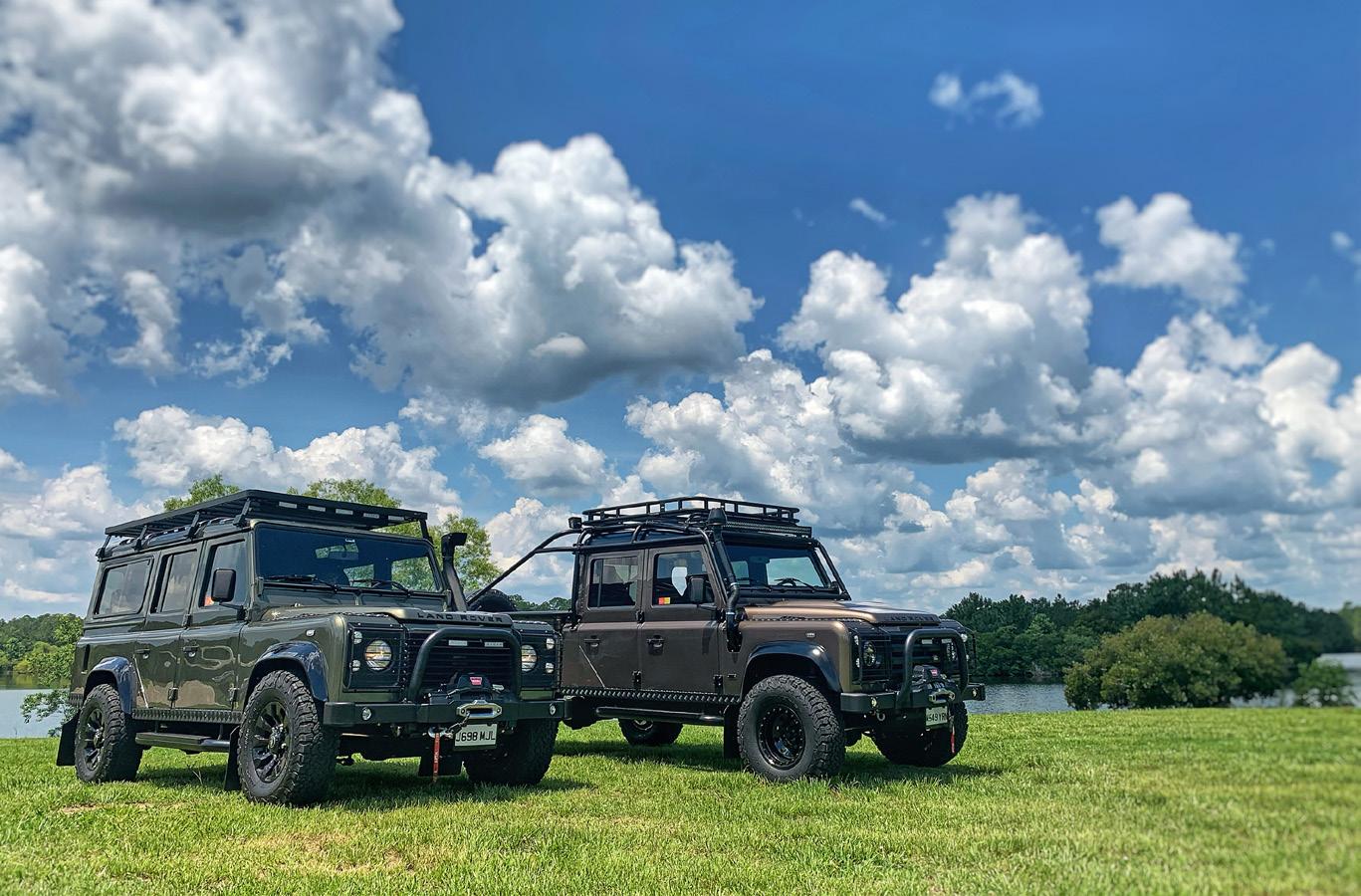

Mark recalls their trip to Arkonik’s facility in the UK to spec every inch of ‘Cervus’, from the excellent Willow Green paintwork, to the perfectly contrasting brown leather interior, complete with custom Stag head stitching into the headrests. This car has everything Mark and Jenny wanted and the factory tour and specification visit was, in Marks own words, “A trip of a lifetime, where we really got to see what the British quality of these vehicles is truly all about”.
After some time with the 110, the couple couldn’t resist the opportunity to spec and order their 130 truck. This was purchased a couple of years ago and recently Mark and Jenny have
utilised Arkonik’s SVO facility in Charleston South Carolina, where both vehicles underwent engine replacements receiving the ultimate power, with new incredible 6.2L LS3 V8 engines fitted to both 110 and 130 side by side.
Mark said: “Arkonik were once again amazing throughout. Both vehicles were collected from our home and when ready, we flew to Charleston and test drove on their tracks, before both 110 and 130 were shipped out to us in Montana, where they have recently been unpacked and so are literally fresh out the box! Like having two new vehicles again, and this time around both with the ultimate power”.
“With two of their vehicles and our recent upgrades at their US facility, we are clearly big fans of Arkonik and I cannot say enough good things about these guys and the way they operate. Tom and his team in the UK have been amazing and especially so throughout the challenging times we’ve all been living through globally. They have specialists in all areas of the build and their online customer portal is great, where we got to see the build taking place throughout all of the various stages. This is top UK quality. Likewise at the Charleston facility. We could not be happier”.

BY SOPHIE MODA


By Renata Fernandes

Creativity and silver linings.
Have you ever seen a Fire Lily? Fire
Lily is a tiny flower that only blooms after a forest fire.
Sometimes, in nature and life, we need to go through fires so our own flowers can blossom.
The same happens with modern society. Throughout history, there has been many occasions when war, economic crisis,
epidemics and tragedy have given birth to unimaginable beauty. Sometimes they came in the form of art, sometimes technology or social change.
The same thing happened to us since the beginning of the COVID-19 pandemic. Each lockdown has brought significant challenges to us individually, but also incredible opportunities to create, renew ourselves and change.
Sleeping with Art is our Fire Lily, one of our many silver linings of 2020 and 2021. During lockdown we were all using
social media and technology more, not only to be in touch with others but also to be entertained and to find inspiration online. Art and human creativity were our inspiration throughout all lockdowns. The timeless nature of art and design put our new reality into perspective. They last longer than crisis and pandemics. They elevate us.
This is how Sleeping with Art came about.
Every day I would find one or more incredibly talented artists showcasing
their artwork online using several different social media platforms and websites. I started to share their work daily to both celebrate and appreciate them. After six months, I found myself with an enormous list of artists I would like to buy art from and imagined how wonderful it would be if I could bring some of them together for a small but perfectly formed car art exhibition by invitation only, to show their work to petrolheads like me who might love their work too. Everything starts with an idea, a simple image we can see in our mind’s eye.
What was once a little idea, became the biggest car art exhibition in history and it’s taking place on the 23rd and 24th September 2021 at Lemore Estate in Herefordshire.
How did it all happen? When genuine, positive people with similar passions
and vision get together, everything is possible. Sleeping with Art attracted the interest of so many artists and professionals working within the automotive sector that we now have over 75 artists showing their work, several art cars (including Bentley’s latest art car by Rich Morris), prototypes, several automotive brands bringing unique cars to the event, UNICEF UK as an official partner thanks to the generosity of Belgium born photographer Bart Kuykens, and wonderful brands supporting us from year one.
The experience is not quite like anything anyone has ever experienced simply because it never existed before other than in our heads. Imagine going to a really beautiful luxury venue and seeing art throughout the entire estate, including bedrooms, toilets, gardens and public rooms. Imagine that the food you eat and the drinks you try while you are

there remind you of cars and that as you walk throughout the property you find car-themed surprises on the way that were completely unexpected, including digital art.
Now imagine that the people attending the event are people like you too, who love cars, work with cars, collect cars, take pictures of cars, design cars and do different activities within the realm of cars.
Now also imagine that if you buy any of the artwork you see there, no matter the price, not only you will be buying directly from an independent artist, but you will also be raising funds to UNICEF the charity leading the largest vaccine procurement and supply operation ever: The Global COVAX Facility. The aim of the initiative is to ensure that all countries participating (over 190) have equitable access to 2 billion doses of the COVID-19 vaccine by the end of 2021.
To make it even more special, b500 magazine is an official media partner and the occasion will mark the launch of B500X Arkonik by Etienne.
And what about the artists? Who are these people?
We decided that we wanted to be inclusive from day one and to showcase the work of seriously well-known artists globally as well as creative people working within the automotive sector who create extraordinary pieces in their spare time too. You will see unique work developed for the event by Rock & Roll hall of fame photographer Gered Mankowitz and royal portrait artist Christian Furr. Camilo Rios (RioCam on Instagram) is coming to the UK and showing his work for the first time outside the US at Sleeping with Art. You will see the work of Derek Gores who developed Hugh Hefner’s Playboy’s cover among stunning work by artists such as Benedict Radcliffe, Stuart McAlpine Miller, Paul Oz, Margot Roulleau-


Gallais, Paul Howse and many others who deserve appreciation and praise. Among the artists is McLaren Design Director Rob Melville who will be showing his parallel work as an artist for the very first time too.
Special is not the right world. Sleeping with Art will be extraordinary and being the inaugural event, everyone attending will be automatically become an “Inaugural Member” giving them the possibility of having first access to Sleeping With Art tickets every year, as well as well as first access to artwork by many of the artists even before they go online.
Unlike the majority of the high-end events and other car events we all go to regularly and love, Sleeping with Art is a unique immersive art event: You can eat and drink creative food and drinks as well as sleep with art and incredible cars near you.
Request your tickets soon Website: www.SleepingwithArt.com Image credits: Lemore Estate, RIOCAM, Derek Gores, Bentley Motors


DOWNLOAD

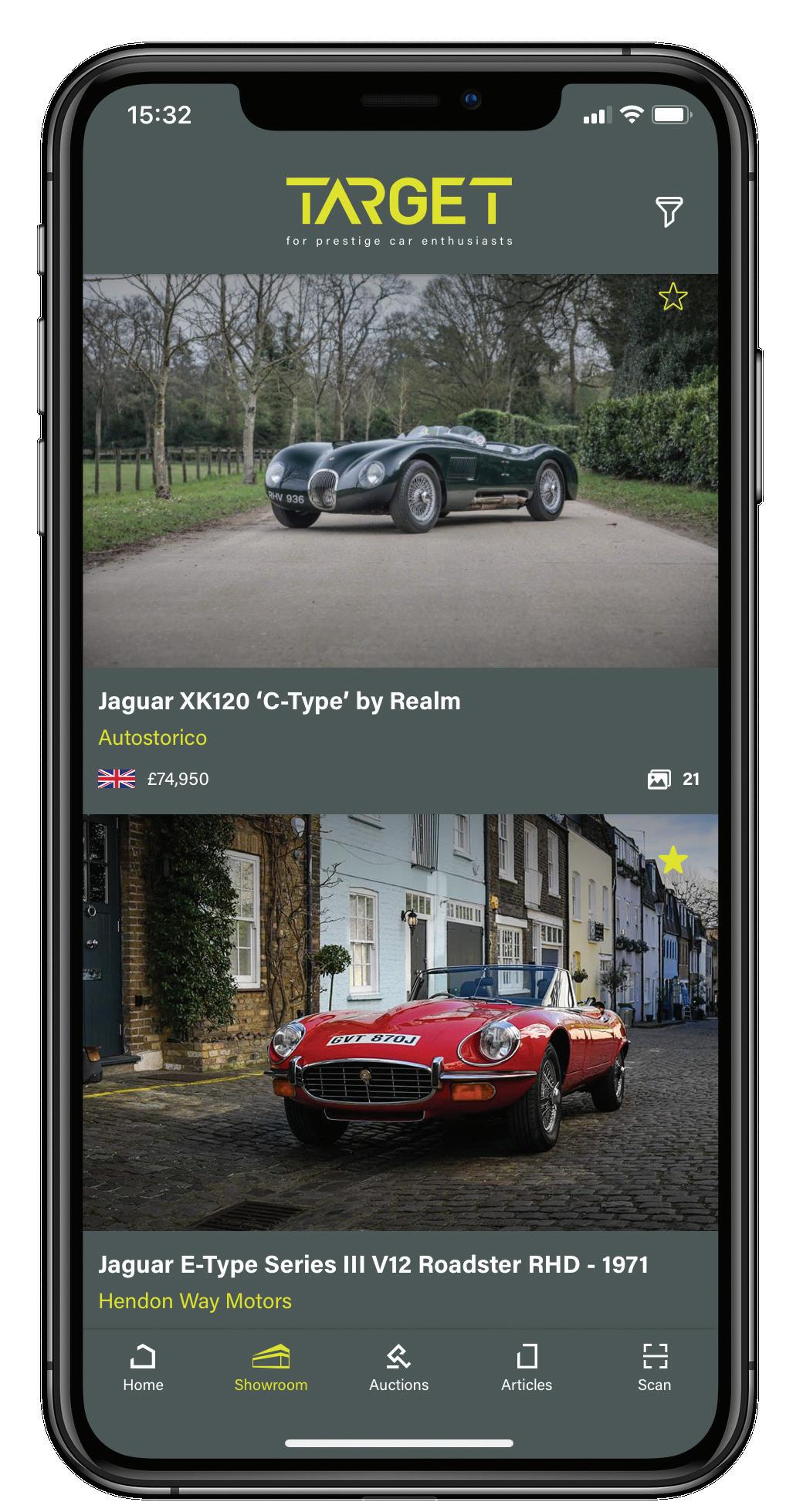


Amy Shore is renowned for her photojournalistic style in the automotive world. Her aim is to portray the love and passion we all have for machines on wheels through rose tinted spectacles, whether that be road trips across Europe, humble workshops or worldwide events such as the Goodwood Revival.

Looking across the North Sea to the warm, hazy land mass of Orkney with a beer in my hand, I reflected on the week that had just passed. 1,500 miles previously, myself and 100 other riders embarked on the longest motorcycle rally in the UK - The Great Malle Rally. Run by motorcycle apparel company Malle London, this rally isn’t one for the faint hearted. Over the course of the week, riders traverse along some of the most wild and beautiful landscapes Britain has to offer, including some of the most technically difficult. Hardknottt Pass in the Lake District, for example, has a maximum gradient of 33% in some places. Along with severe road camber, tummy churning drops and hairpins tight enough that you’d need to have a head like an owl to look where you’re going. The thought of meeting a car on your way up is not a pleasant one.
There is just one condition for this rally - the motorbike you’re on has to be considered to be inappropriate for the challenge ahead. Some may say that’s a daft idea, others will understand it to add to the element of adventure. Yes, we could road trip in a brand new, fully serviced Audi. We would arrive at our destination in comfort, warmth and if you’re anything like me, well rested. But that’s never the point of an adventure, is it? The fantastic thing about motorcycles for a start is that you feel your environment. The rain is cold and finds its way right down into your boots. The wind pushes hard against you as you ride. But the welcome sun warms your damp gloves. You can often find yourself riding next to a flying bird. You smell the rain on warm tarmac. You arrive at your destination tired and hungry, but also hungry for the next stage of the journey. You feel like you accomplished something that ‘normal’ people would think you were out of your mind to attempt and on top of that, call it ‘fun’.
I was on a bike that initially seemed like the perfect fit for a long distance motorcycle rally, a BMW R18. At 365kg and almost 2.5m long, this is a cruising king. The long snaking A roads were a dream. The 1.8 litre engine sat happily on the motorway down to the start of Lizard Point in Cornwall. But this rally wasn’t about motorways and for that reason, this bike was probably one of the
most inappropriate bikes to comfortably fit the brief. If this rally was any longer, I think my triceps would have arrived home looking like the Hulk from wrestling the bike around corners and car parks. Hardknott Pass was certainly the section I feared the most. I tactfully managed to let all other riders head up before me to give me the least chance of making a fool of myself. Enveloped in thick cloud the entire way up, I simply prayed to the motorcycle gods that there wasn’t a tourist coming down the opposite way in their comfortable Audi with Cliff Richard playing out of the speakers. To make matters more interesting, my slow movements and nervous breathing meant that my visor quickly steamed up inside. Seconds after opening it, my glasses quickly began to be coated in the fine cloud mist. So there I was, sat on a ridiculously heavy motorcycle that had only been dropped off at my doorstep a week before, riding up one of the UK’s most difficult roads, unable to see a bloody thing.
In an almost eye-prodding motion, I managed to clear my glasses long enough each time to get me up or down a hairpin successfully, both the bike and I stayed in contact with the road. By the time I got to the checkpoint 5 minutes later, I was exhilarated. I say now that I’ll never do that road again but I said that after the last two Malle Rallies. Where do I sign up for next year?
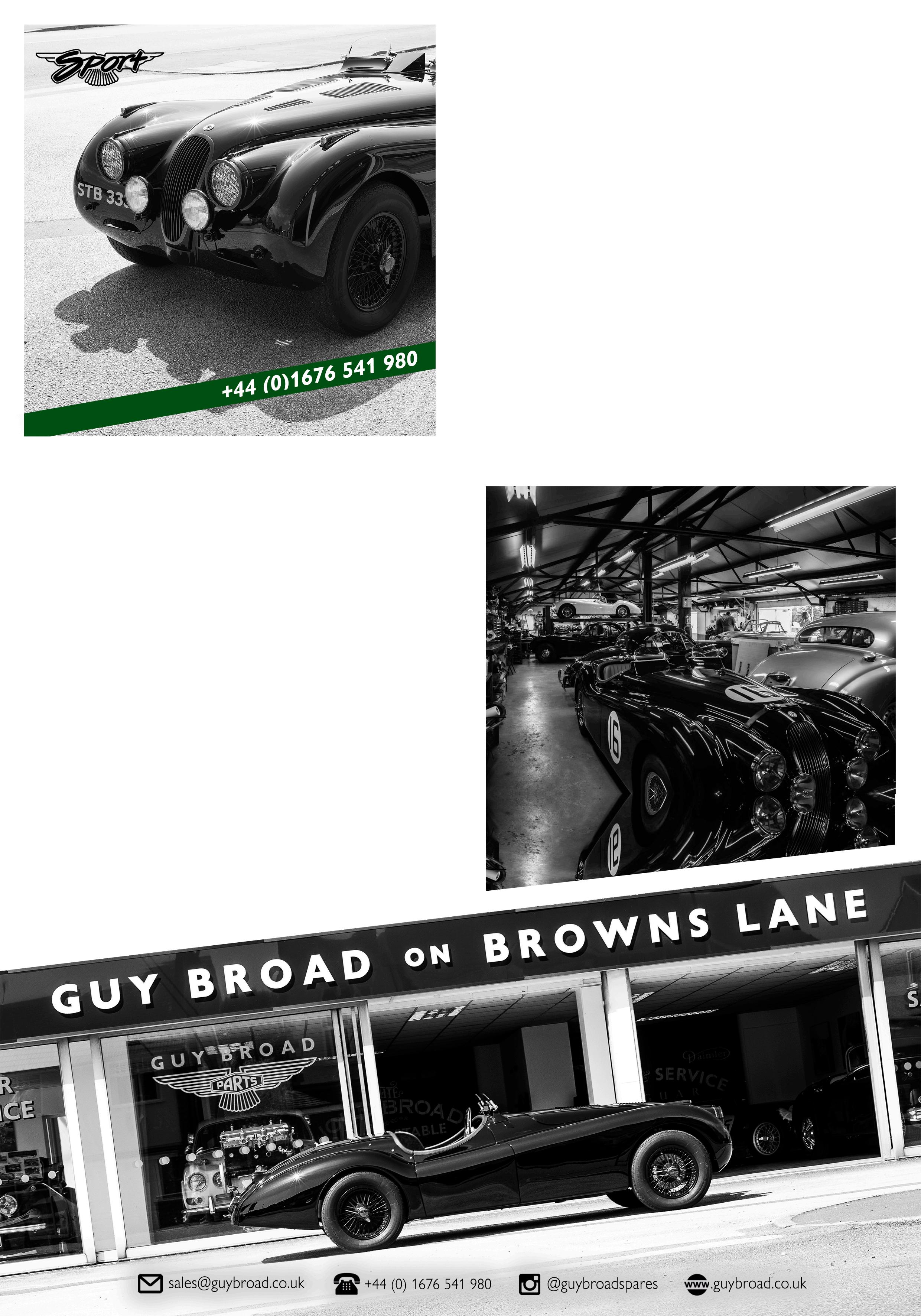

Casper van Rooij & Sebastiaan van Rooij, are twins from Amsterdam. They have always loved cars, and have been taking photos of them for many years. They love to work together with other people, brands and companies to create something amazing!
It all started when they heard there was a small car event going on close to where they lived. Their dad gave them his small Canon pocket camera to take some photos, and they loved it. A few weeks after they got their own camera, a Canon 1300d and started taking more and more photos of cars. They ate passionate about taking pictures and would love to work with new companies and people.
Here in their own words they talk about their day by the pool with a model and a Ferrari.
We wanted to go back in time. The idea was to create a scene inspired by the 80’s and the Italian lifestyle back then, involving a Ferrari, a model and a pool. We were brainstorming ideas for a new, unique photo series together with Bodie, owner of Real Art on Wheels, a company specialising in classic cars.
When we came up with this idea, Bodie loved it and instantly knew which car we should use to create this scene; the Ferrari 328 GTB in his basement. Perfect, we thought, the 328 is an absolute masterpiece and it can’t get more classy and 80’s than that.


This 1985 328 GTB is the absolute first production car. After the car was used for the pictures in the original sales brochure, it was delivered to its first owner in Italy. About 15 years later the car was imported into the Netherlands. This Ferrari is part of an important collection with more first production Ferrari’s.
So now we had the car, the next step was to find a house with a beautiful garden and pool, and most importantly, a pool where the car could get close to. Luckily we knew a lovely family with a house that ticked every box. The house was built in 1927 and designed by famous architect Pierre Cuypers.
We had never worked with a (professional) model before, so this was a first. It’s always fun to start something new and have a new challenge. We didn’t really know how to source for a model, so we just started contacting some through Instagram. One of those models

was Emma Binnendijk, a very kind and enthusiastic person. She loved the idea and was keen to shoot.
Now that the most important parts of the shoot were arranged, it was time to get into the details. We wanted a boombox and inflatable flamingo to complete the look. We worked together with GPO Retro, a company that makes retro looking products with new technology. They provided the 80’s looking boombox.
Time to shoot. It took some planning, but finally the day was there. After we had a test at school (that didn’t go as we hoped for both of us) and picked up Emma from her home, we immediately had to get to the shoot location in Aerdenhout. Traffic was exceptionally bad, so we were running late.
A colleague of Bodie, who was delivering the 328, was running very
early on the other hand. After those minor inconveniences we finally arrived at the house. Emma brought a bag full of clothes. While one of us was putting an outfit together with her, the other was inflating the big, pink flamingo! Now that the whole scene was set up, we began taking the photographs. Shooting with a model is really different than shooting a car only, but we loved doing it. Having a person in the photo series really adds to the story and makes it more interesting to look at.
It was a big challenge, but we are very proud of the results and everyone involved did a fantastic job. But most importantly, we had a blast!
Casper & Sebastiaan van Rooy - Rooy twins
Model. Emma Binnendijk
Car. Real Art on Wheels

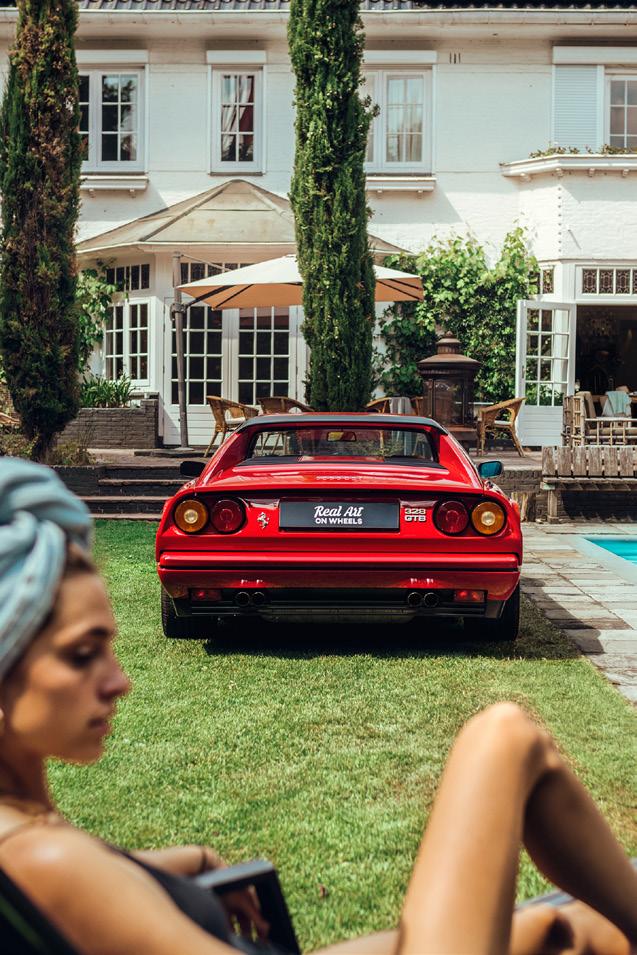

We take a step back in time at The Classic Motor Hub
It’s the Summer of 1969 and a group of friends get together at The Classic Motor Hub. They try out the Aston Martin DB6, the bright red Jaguar E-Type and the Henri Chapron Citroen DS21 Décapotable. These were very much cars of their moment in the 1960’s. Now jump forward 52 years and it’s the Summer of 2021 and all three of these exceptional cars are currently for sale at ‘the Hub’ - with the DB and the DS already on the website - and the E-Type ‘coming soon’!
www.classicmotorhub.com
The 1969 Aston Martin DB6: In Silver Birch with black interior, this specific example has and upgraded 4.2-litre straight-six-engine and a Harvey Bailey suspension kit.
The fabled bloodline of DB4, DB5 and DB6 represents many enthusiasts’ idea of the archetypal Aston Martin. The blend of Italian styling and British engineering make them among the most recognisable and coveted of all classic cars.
The Aston Martin DB6 being offered for sale by The Classic Motor Hub left the Newport Pagnell factory on 14 February 1969 and was sold via the HR Owen dealership. Chassis number DB6/3550-R was fitted with engine number 400/3969, and when new it would have cost its first owner the princely sum of just over £4,000 including taxes.
Originally supplied in black with matching trim, the DB6 was fully restored during the early 2000s. As part of that extensive process, which is documented in the history file, the car

was stripped to bare metal and repainted in the iconic Aston Martin shade of Silver Birch.
The Borg Warner automatic gearbox with which it had left the factory in 1969 was replaced with a genuine S5/325 ZF five-speed manual unit, while in the cabin the headlining was replaced and a full set of black Wilton carpets fitted.
Further work was carried out in 2009, when a Harvey Bailey suspension kit was fitted in order to improve the car’s roadholding. The upgrades comprised new springs and dampers all round, including the adjustable Armstrong Selectaride rear dampers that had been
optional extras on the DB4 and DB5 but were standard on all DB6s.
The DB6 was then sold by Oselli Classic & Sports Cars in 2015 and was treated to further restoration work by the same company. The job list included a respray – once more in Silver Birch – as well as rechroming the brightwork, replacing the windscreen and fitting all new rubbers and seals, a complete retrim, and a rebuild of the front suspension. The steering geometry was reset at the same time.
A modern high-torque starter motor dramatically improves starting performance, and the original engine has
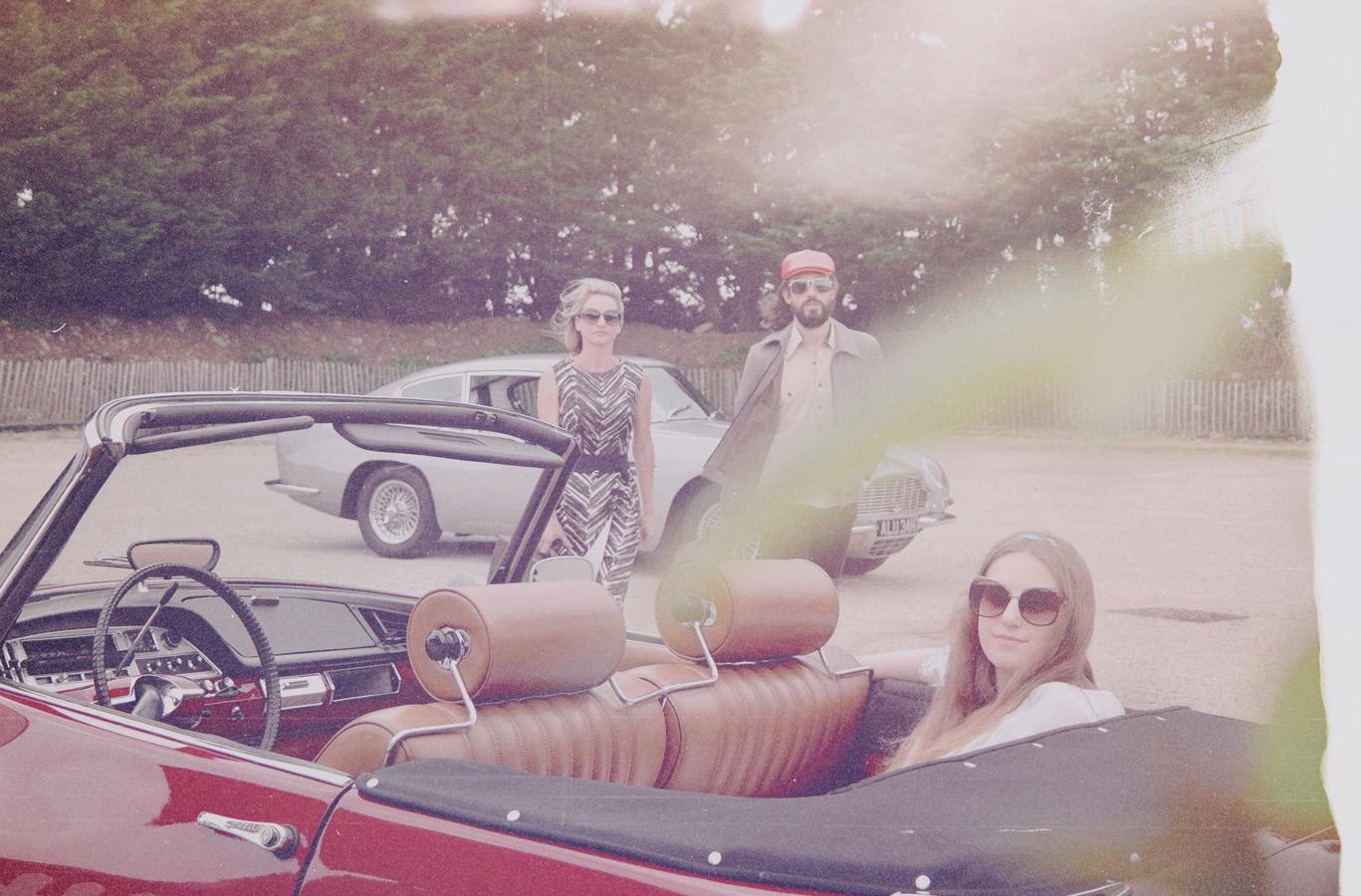


been upgraded to 4.2-litre specification. The cylinder heads have been converted so that it will run on unleaded fuel, too.
Electric power steering completes the package and the result is an Aston Martin that drives beautifully, as befitting its status as the ultimate development of the original DB line.
When it was launched in 1958, the DB4 represented a fresh start for Aston Martin. Seeking to replace its ageing DB2 line, it combined a new platform chassis with a sharp body that was designed by Touring and built using that company’s lightweight Superleggera system.
Beneath the bonnet was Tadek Marek’s new 3.7-litre twin-cam straight-six, and the DB4 progressed through Series I to Series V variants – as well as the shortwheelbase, competition-focused DB4 GT.
In 1963, the DB4 was replaced by the DB5, for which the engine was enlarged to 4 litres. There were myriad detail differences, but in essence this newest variant was a logical development of the last DB4s. It became the most famous of the DBs, however, thanks to its big-screen association with James Bond.
More fundamental changes came with the 1965 introduction of the DB6. In order to increase cabin space, the wheelbase was extended by almost four inches and the rear end was redesigned with a Kamm-style tail and integral lip spoiler.
The Superleggera construction was dropped, with the result that the body was considerably more rigid for a weight penalty of only 17lb.
The 4-litre engine was carried over from the DB5 and produced 282bhp, or 325bhp in Vantage specification –enough to give that model a top speed of 150mph. There was a choice of five-speed ZF manual gearbox or threespeed Borg Warner automatic, disc brakes were fitted all round, and for the
first time there was the optional extra of power assistance for the rack-andpinion steering.
A total of 1786 Aston Martin DB6s were built before the model was replaced in 1970 by the DBS, which heralded both a new design direction and the end of a glorious era.
The 1967 Citroen DS21 Décapotable
This Certified Chapron-built car looks stunning in the summer sunshine, in its very rare specification Rouge Rubis with Cuir Gold interior.
Few cars can match the combination of style and comfort offered by the Citroën DS Décapotable, and the example now being offered for sale by The Classic Motor Hub has been superbly restored to original specification.
The Henri Chapron order form is included in the car’s history file and shows that chassis number 4376093 was delivered to the carrosserie’s Rue Aristide Briand premises in central Paris on 8 December 1966. Built under the Chapron number 9092, it was finished in Rouge Rubis with a Cuir Gold leather interior and left Chapron on 14 February 1967.
This DS21 Décapotable is a rare find in that it features the earlier style of ‘Frogeye’ headlamps but benefits from using LHM hydraulic fluid. That combination was produced only between September 1966 and September 1967, before the front end was updated with the ‘shark’ style of enclosed headlamps for the 1968 model year. The mineral oilbased LHM fluid had been introduced in order to replace the previous LHV and LHS fluids, which were hygroscopic˙and therefore much more prone to wear.
It is also one of only 60 DS21 Décapotables that were sold in 1967 with the ‘semi-automatic’ gearbox. One of the DS’s many advanced features, this system uses a standard clutch and gearbox, but the clutch is operated via the column-mounted gear lever rather than a pedal.

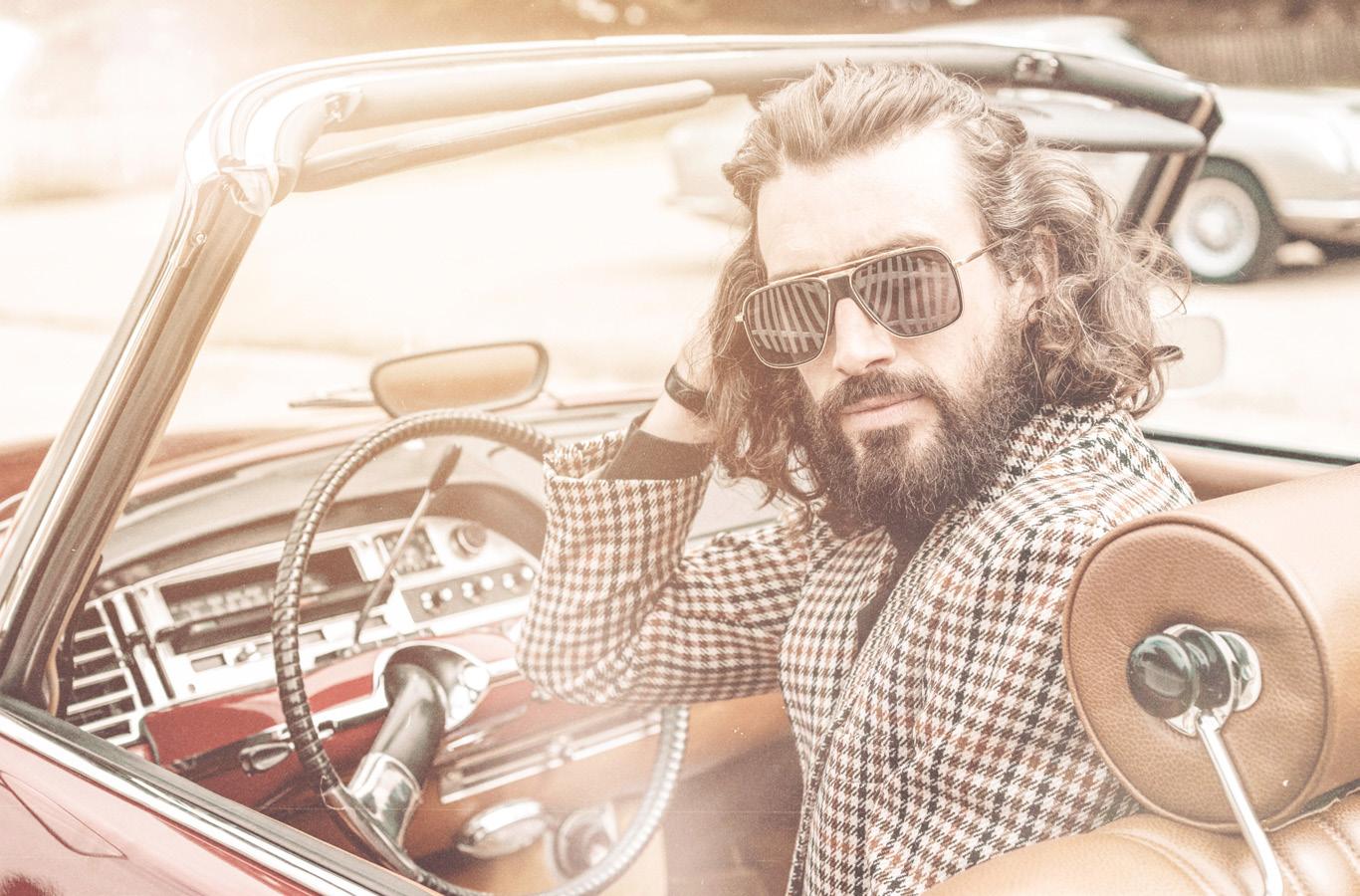
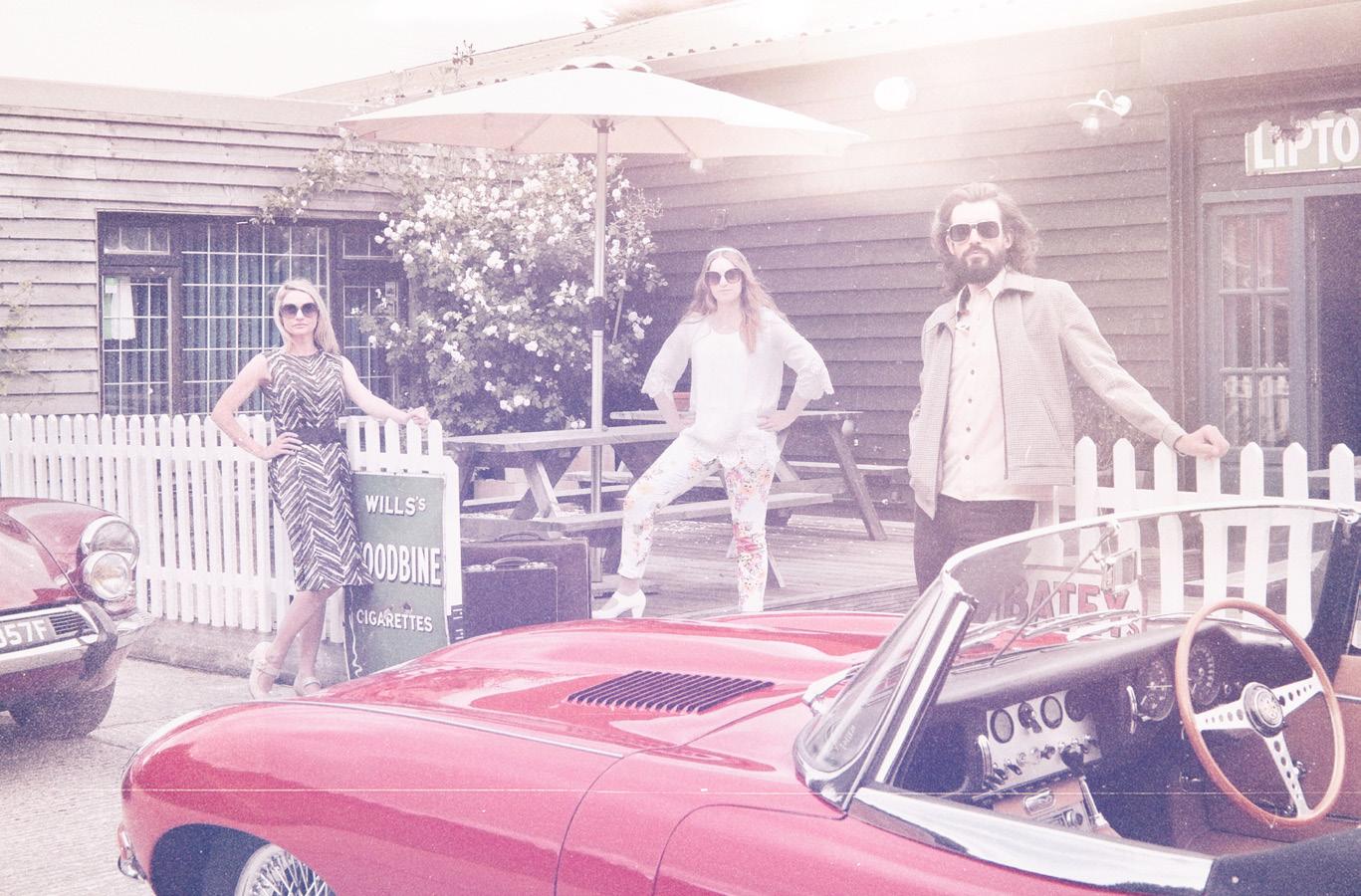


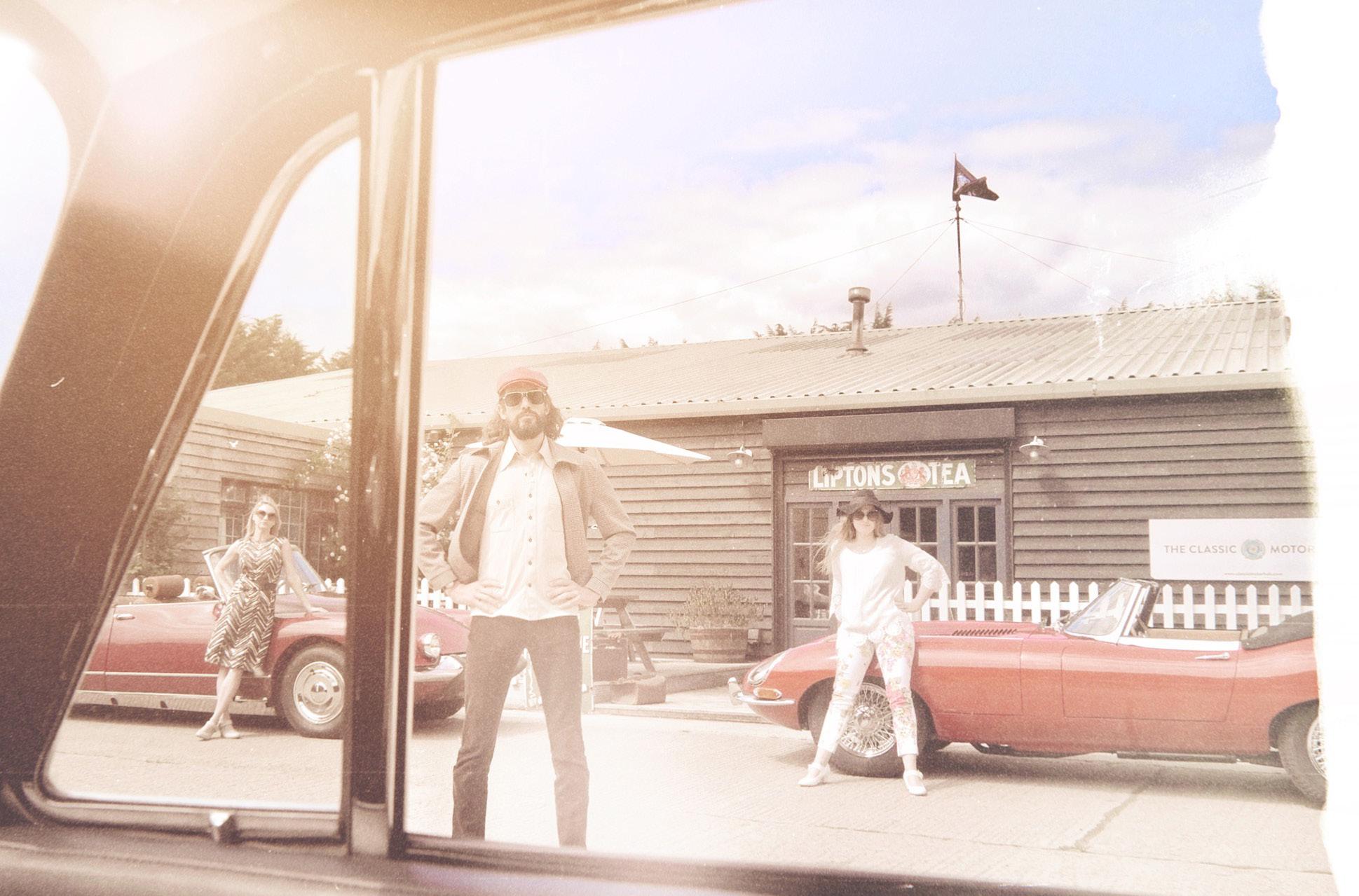
A registration document in the history file shows that this particular car was living in Le Vesinet in the western suburbs of Paris during the mid-1970s, but in 1978 it was acquired by Alistair Hacking and exported to the UK. It was fully restored in 1992-1993, and more recently was transported to a Dutch Citroën DS specialist to receive a further restoration during 2019-2020. This latest work covered everything from the interior to the mechanical components, the hydraulic system, the brightwork and the bodywork.
The car has retained its matchingnumbers status, with the chassis and body numbers matching those on the Chapron register, and the original engine is still fitted. Further testament to its originality is the fact that several of the Chapron markings are still visible on the various body panels. It has been certified by Henri Chapron via a document issued by Noëlle-Eléonore Chapron-Paul in 2019.
The Citroën DS Décapotable is the most sought-after variant of an iconic design, and Chapron built 1365 in total. Only 483 were based on the DS21 model, and this particular example is the 340th of those. Now presenting in exemplary condition following its recent restoration, it drives beautifully and – with its cosseting interior and refined hydropneumatic suspension – redefines the concept of comfort.
As Jay Leno has said of driving his Citroën DS21, it’s ‘like riding in a cloud’, and there are surely few more stylish ways to travel.
When it was launched in 1955, the Citroën DS was like nothing else on the road. Its confident, flowing design swept away any sense of dour post-war austerity and instead looked to the future and the burgeoning jet age.
But there was more to it than showstopping looks. It was the first massproduced car to be fitted with disc brakes, and its hydropneumatic suspension
system set a new standard in ride quality and offered comfort without sacrificing control. There was power steering, too, plus a semi-automatic transmission system.
Such was its instant impact that 12,000 orders were placed on the day of its unveiling at the 1955 Paris Motor Show. Citroën’s original intention had been to fit an air-cooled flat-six engine, but instead it had to settle on a 1911cc development of the four-cylinder engine from the Traction Avant. Over the years, that was upgraded into 1985cc form, and then in 1965 came the DS21 with a 109bhp 2175cc engine. The final development was the 1973 2347cc DS23, which was also offered with fuel injection.
In total, almost 1.5 million Citroën DSs were built before production ended in 1975, and variants included a Safari estate and – most famously –the Chapron convertibles.
Henri Chapron had presented his prototype at the 1958 Paris Motor Show, and over the next two years worked closely with Citroën in order to make it a production reality. The first Chapron DS Décapotable Usine – ‘factory convertible’ – left the Rue Aristide Briand workshop in October 1960, and they remain the most coveted of Citroën DS models.
Credits:
Photos taken in June 2021 and styled and edited for a 1969 look.
Photographers: Del Gregory & Leanne Punshon (images 5,6 & 12)
‘Polaroid style’ editing: Del Gregory
Location: The Classic Motor Hub, Bibury Cars: Aston Martin DB6, E-Type Jaguar, Citroen DS
Clothes: Vintage To Vogue Bath
Sunglasses: Sophie Moda
Luggage: The Classic Motor Hub
Models: Leanne Punshon, Scotty Chalmers, Elizabeth Gregory
Instagram: @b500.co
@littlebirdphotography_uk
@theclassicmotorhub
@vintagetovoguebath @thesophiemoda
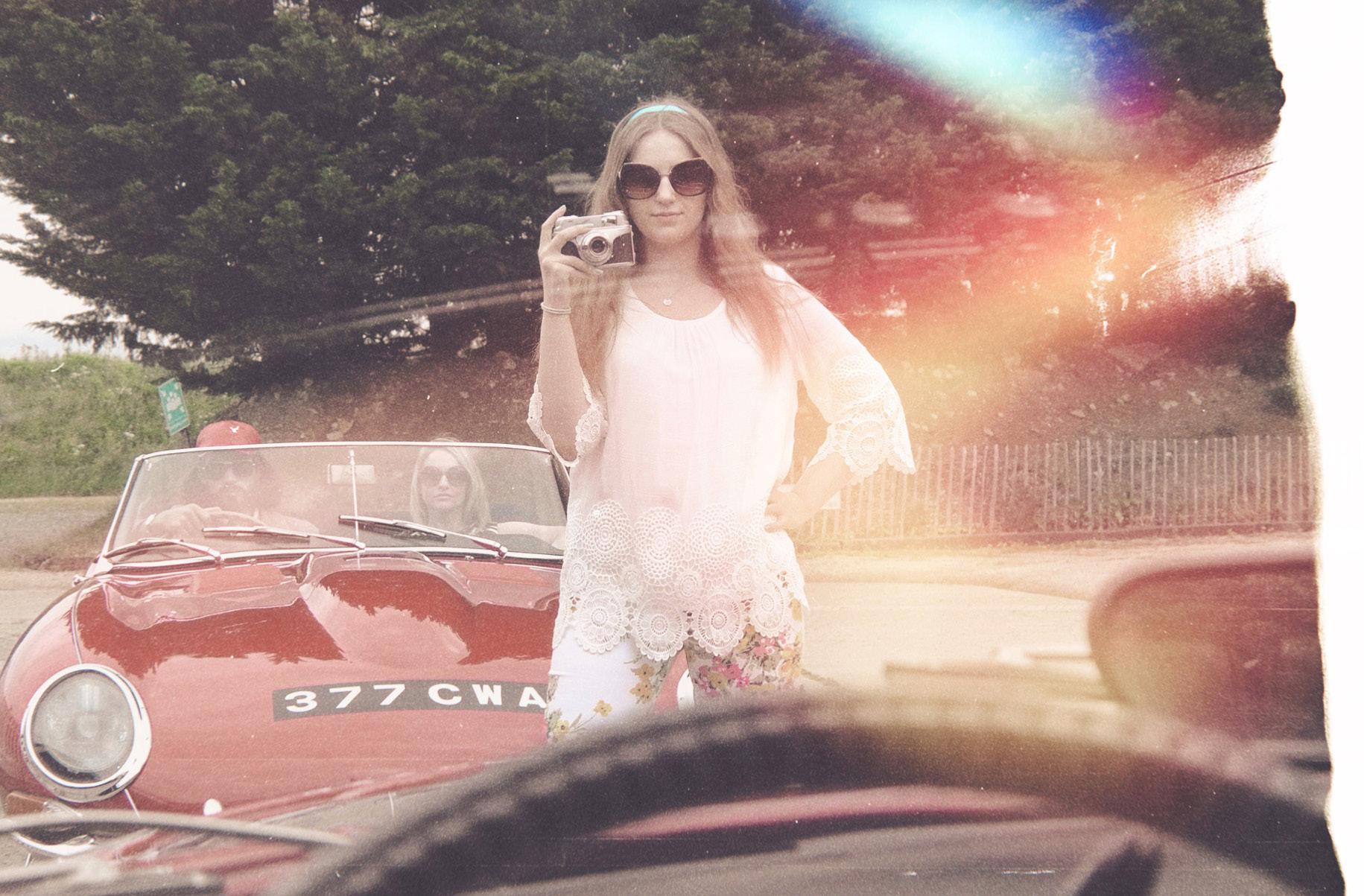





Belgium-born Bart Kuykens successfully navigated both the art world and commercial photography since the outset of his career. Following the global success of his automotive art books ‘A Flat6 love affair’, he has attracted the attention of world-class actors, musicians, and media personalities who have become subjects of his grainy, visually-rich and powerful black and white portraits.
5 Questions, 5 Answers with Jeff Zwart
1. People know you as a director, racer and photographer. If you could only be one of them which one would it be and why?
Probably director, because being a “director” has been influenced by everything else. My vision on things and attention to detail such as design and graphics has been heavily influenced by my photography background. My perspective of high action and the visual translation of speed has be shaped by my first person experience of racing. So really my title of director contains all the elements of racing and photography.
2. You have been a huge inspiration for many young photographers, what would be your advice for them if they were looking for a career in automotive photography?
Stay focused and chose an area of automotive category to focus on. Action, studio, static, lifestyle… choose one
and try to give a unique perspective to that area, all the while understanding that you need to do everything well, but look for one area that will define you. Also remember its a craft and not just hobby… you need to “craft” every photo with a “point of view” and not just shoot a volume of photos.
3. If you say Jeff Zwart you say Pikes Peak. Why is this ‘race to the clouds’ so important for you and what makes it so special?
Every year it’s an adventure, there are no two years that are the same or a road that is predictable to race on. You race against the elements and the road surface and your own fears so it really becomes a personal experience. I love the commitment to put everything together for just one run, there are no pitstops or “next laps” to lean on,… its just lay it on the line and make one run to the summit, no second chances. Its definitive, much like my own career in filmmaking.
4. If you look back at your career with Porsche as a director and photographer, what are your best memories?
In photography it would have to be jumping the turbo for the ad that said “One ride you’ll understand why most rocket scientists are German”. We only shot the car jumping twice and we were so worried about damaging it. We had to walk away from the shoot saying that we “got the shot’ with really only one jump because the first time the
car barely left the ground. It became one of the most iconic photographs I have ever shot and it even was on the wall on the Seinfeld show for while. In my directorial world it would be the Panamera launch commercial since it combined the history of Porsche in both the road cars and race cars with 36 historically significant cars. It allowed me to use all I knew about Porsche and all the contacts I had gained through the years to bing all the cars together.
5. You had many Porsche over the years, which one gives you the most satisfaction?
So many great cars for both the road and racing, but I guess I would have to say, my “first” car which is a yellow 914-6 which I have now owned for 48 years and has given me so many life experiences. It took me to college and it was a subject of may photos in school, I met my wife in it, and it provided one of my greatest racing adventures racing in the 1997 Panama Alaska Rally. My dad was the one who made me start saving my money for a car way back when I was 12 years old and investing in the stock market and when I graduated from high school I was able to spend it so I bought the 1970 914-6. My dad went in the service car for the Panama Alaska race so it was a “full circle” moment to have him chasing the car he had made me save my money for back when I was a kid. I still drive the car today and it is just a car that feels like home.


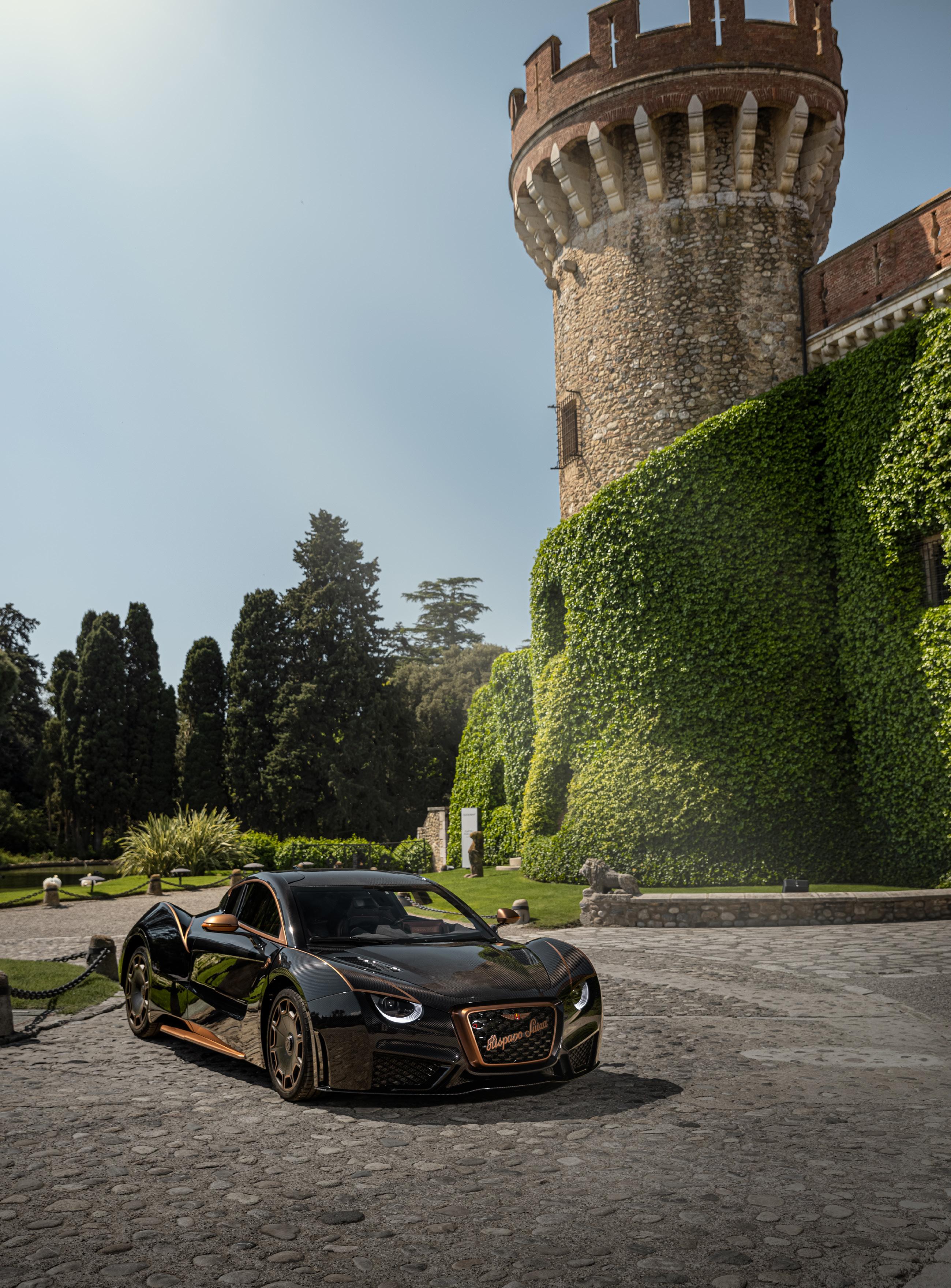
WE DON’T SELL CARS, WE SHARE UNIQUE AND EMOTIONAL EXPERIENCES